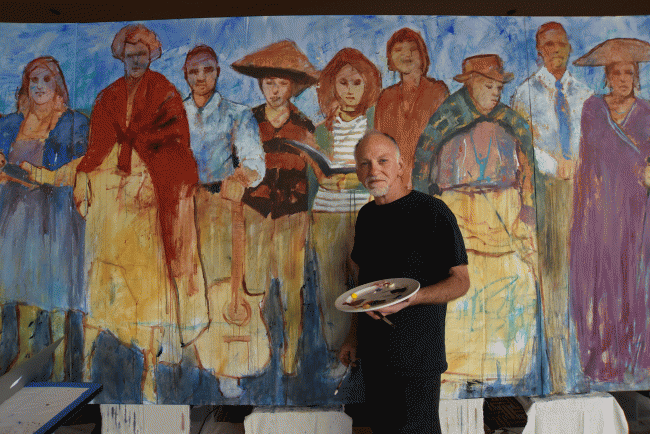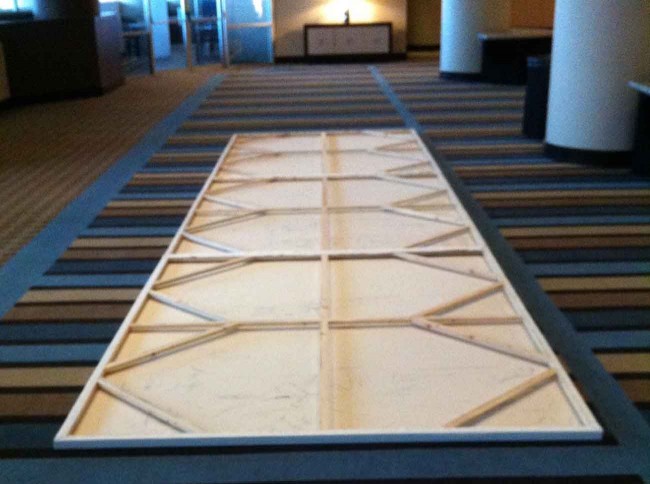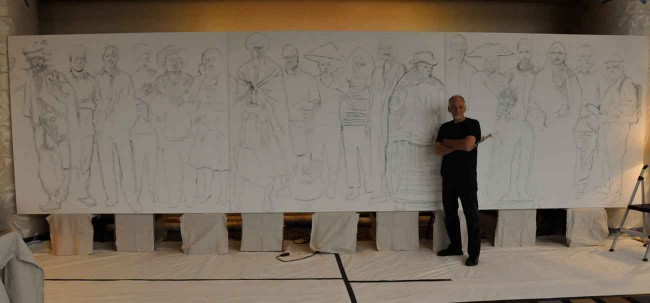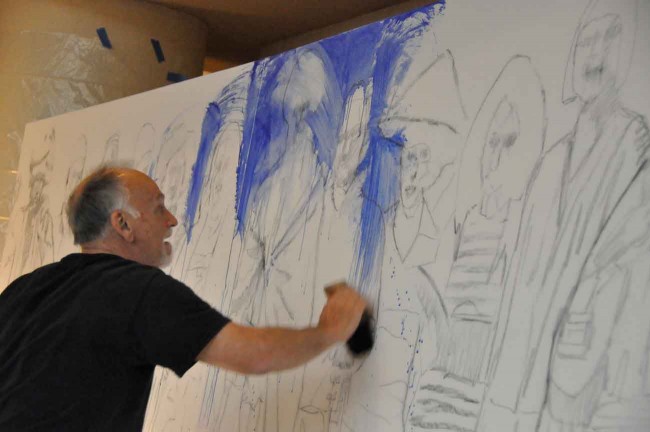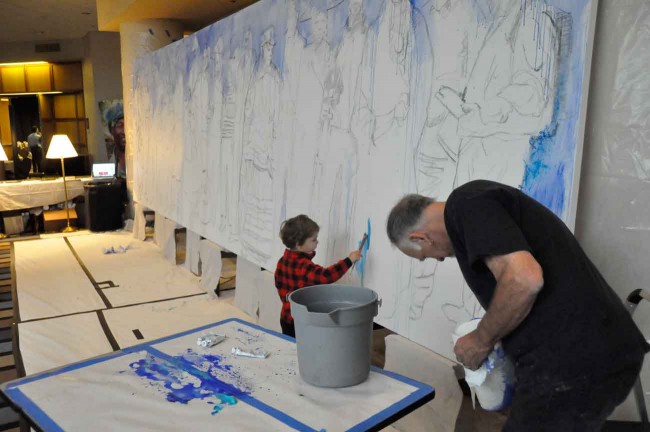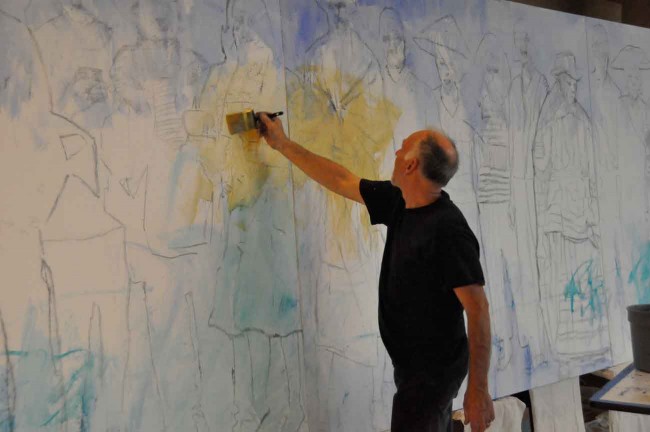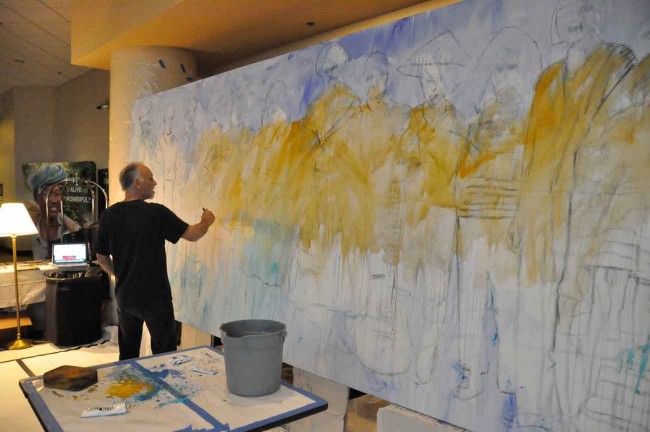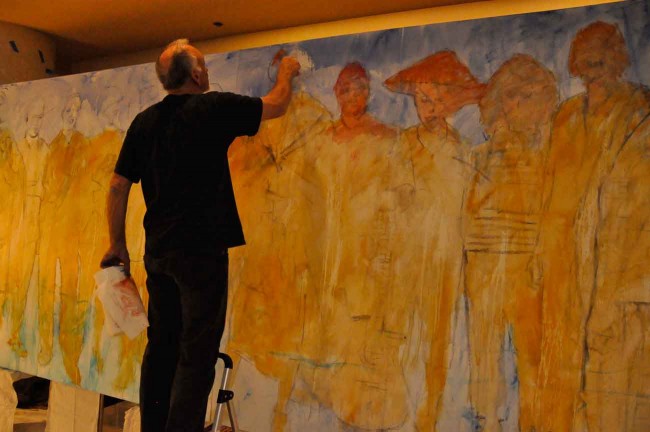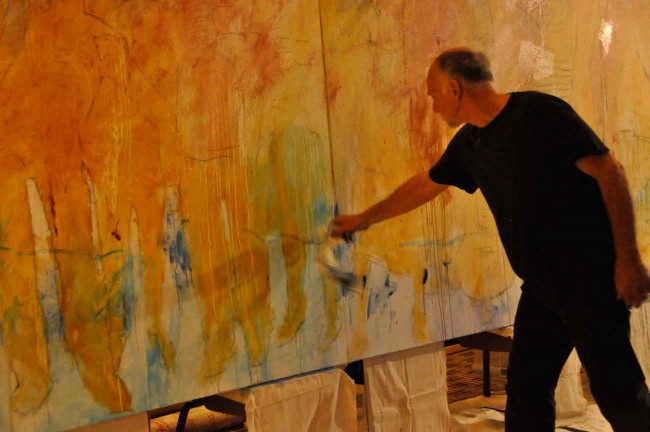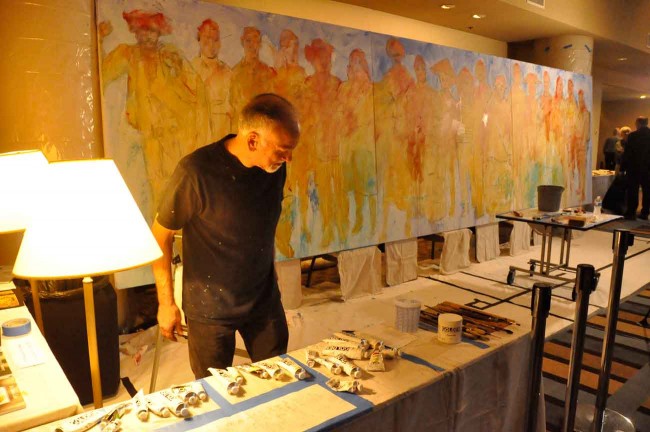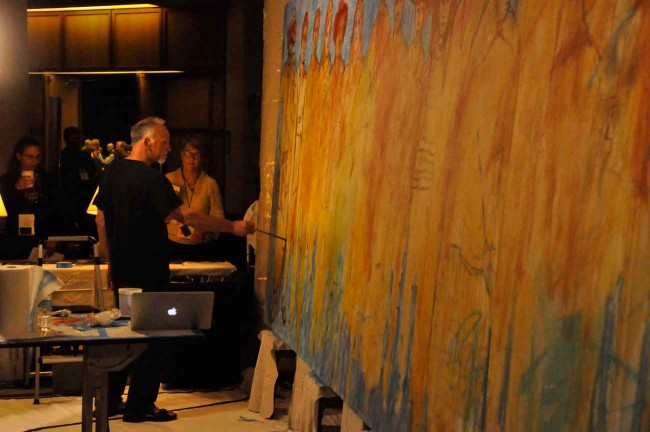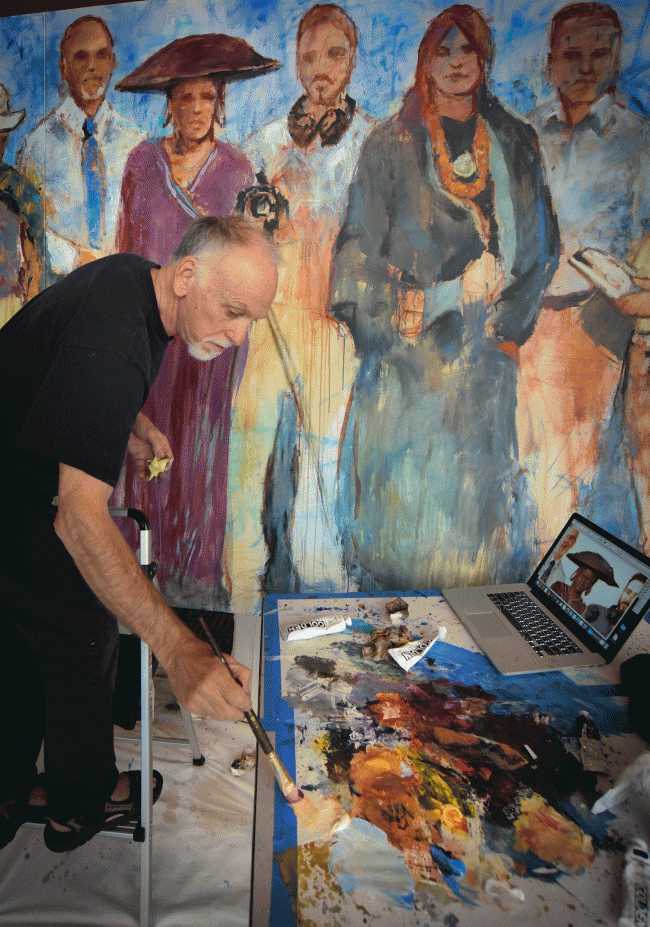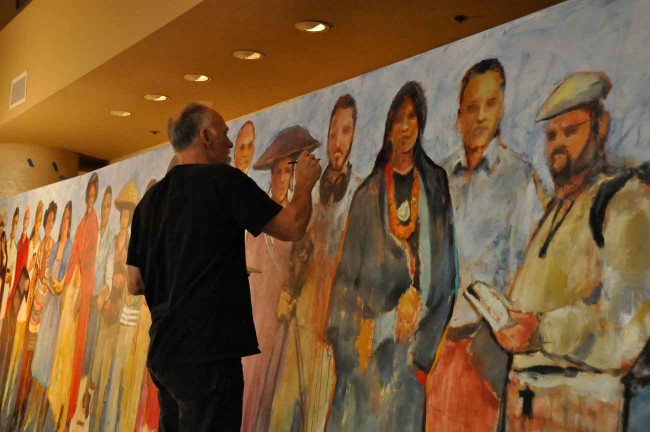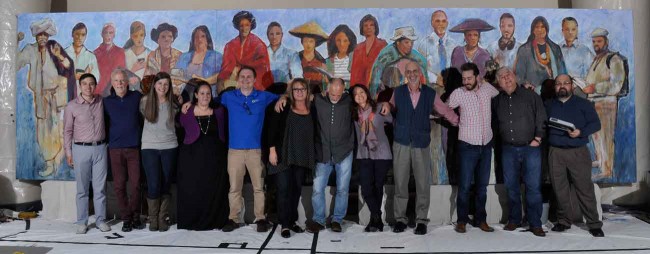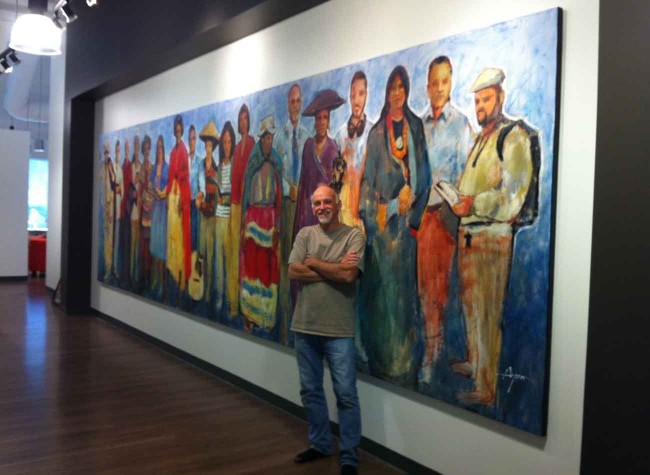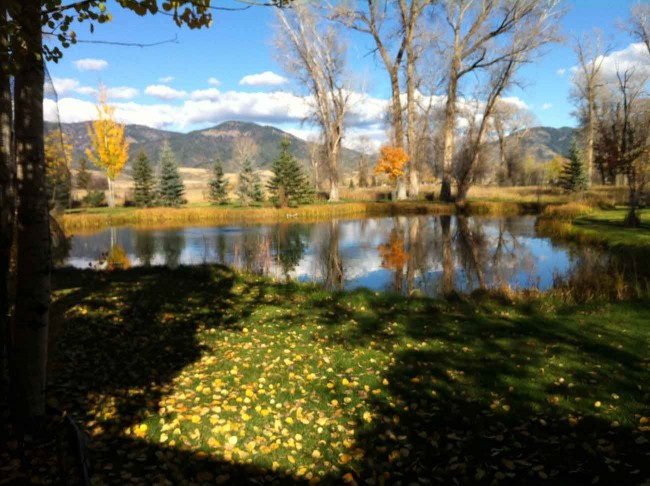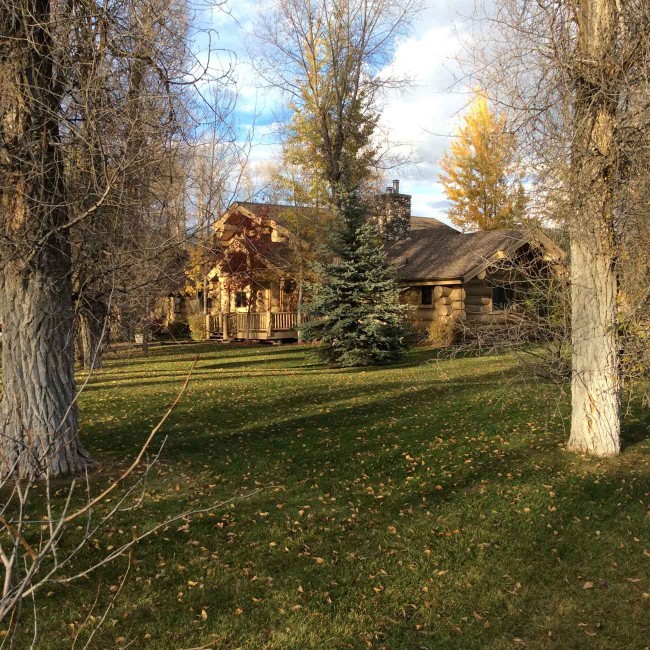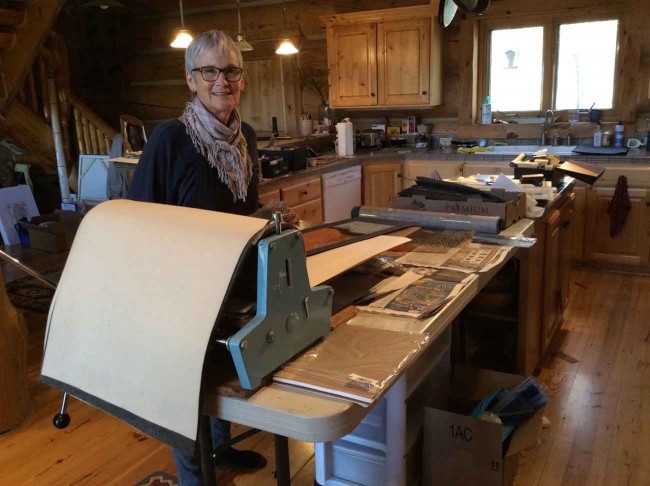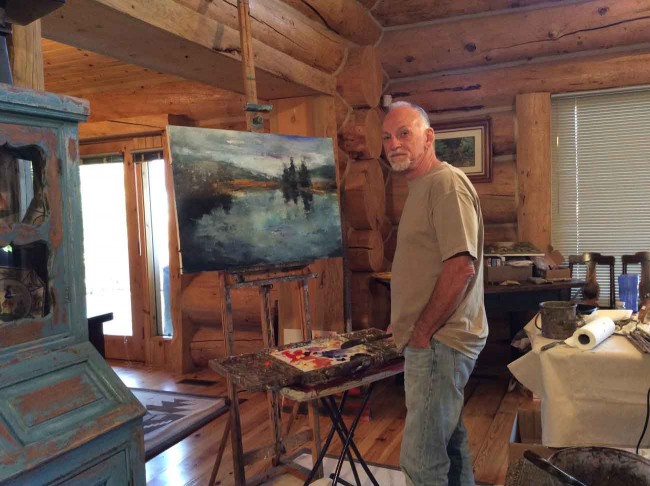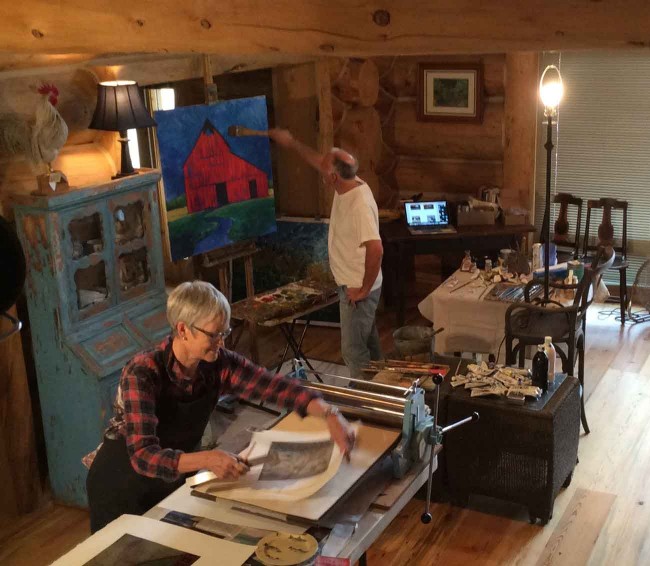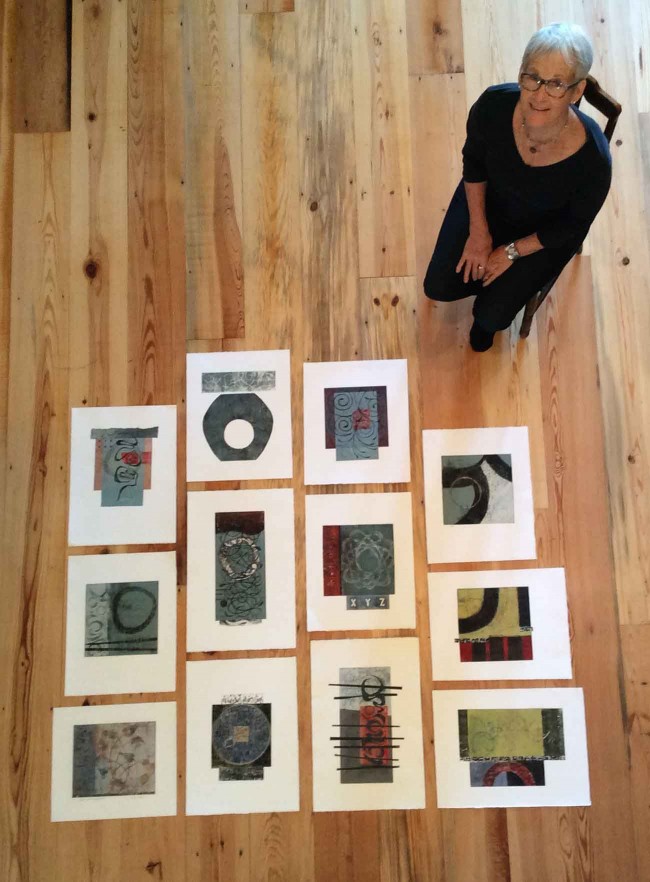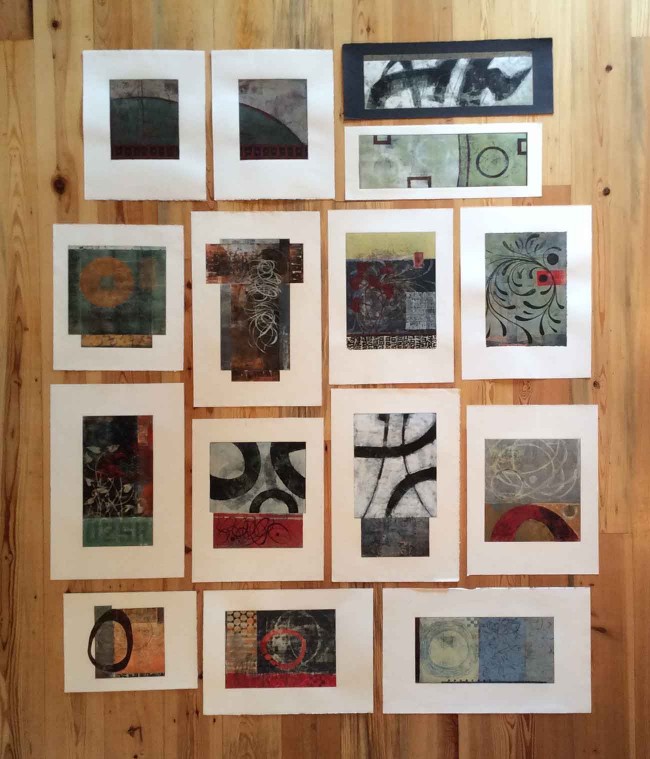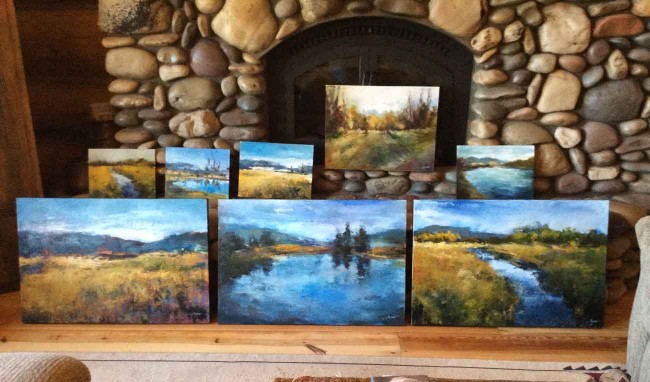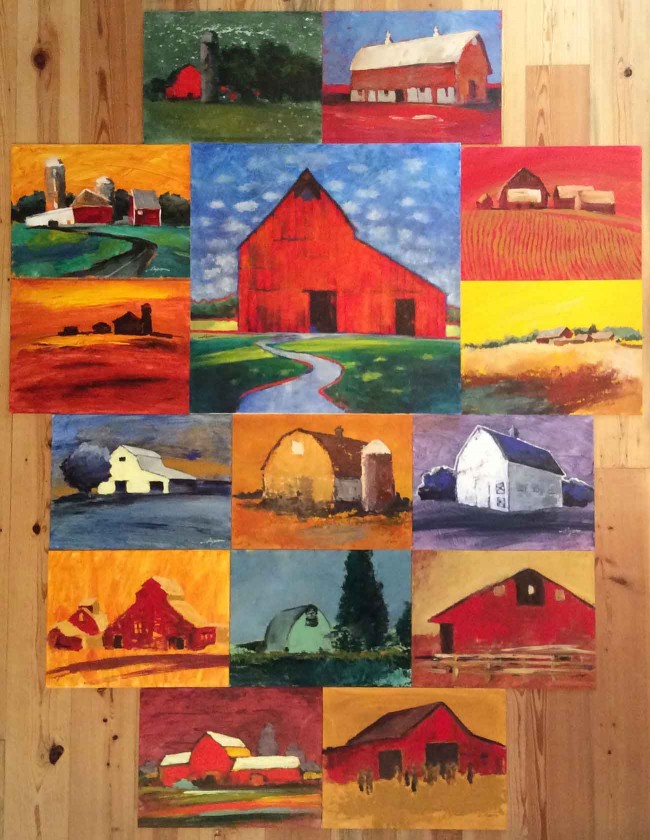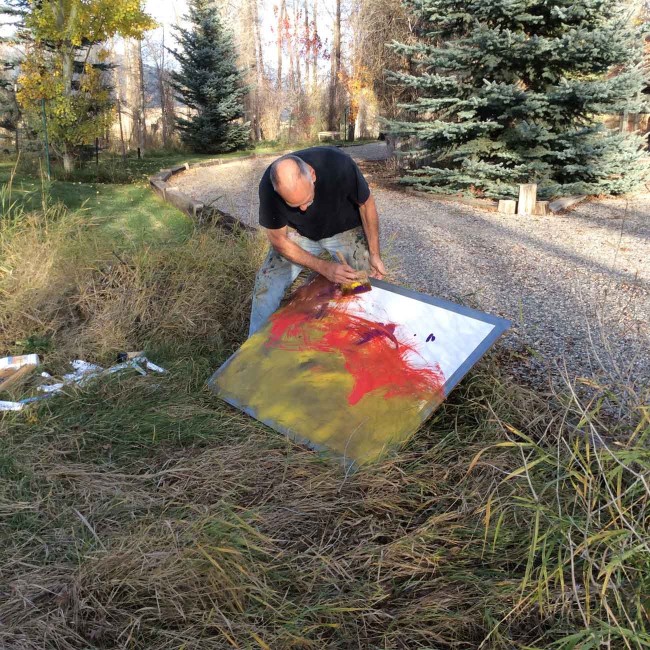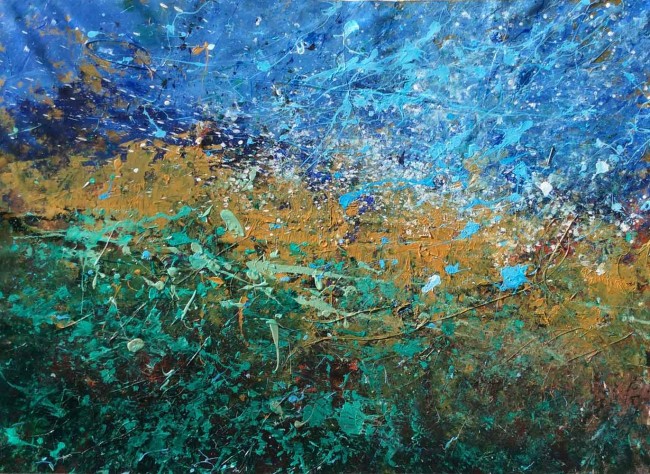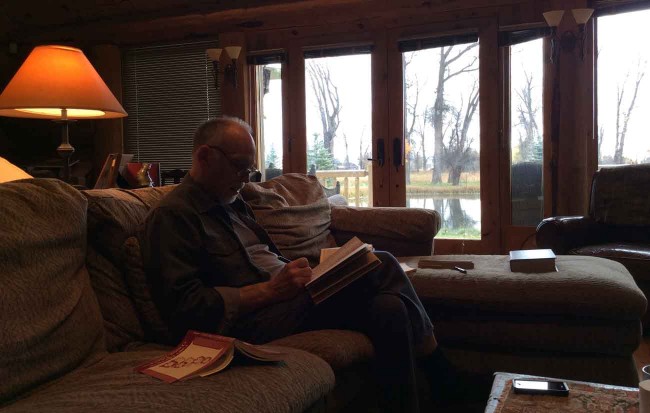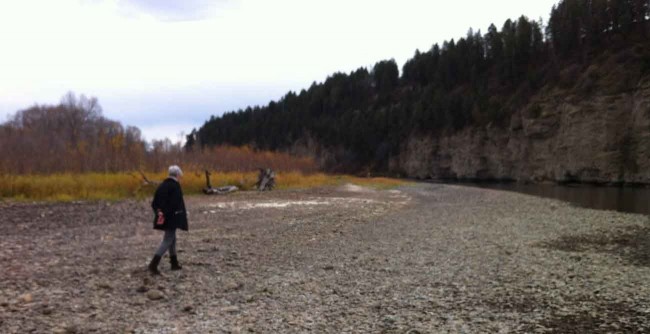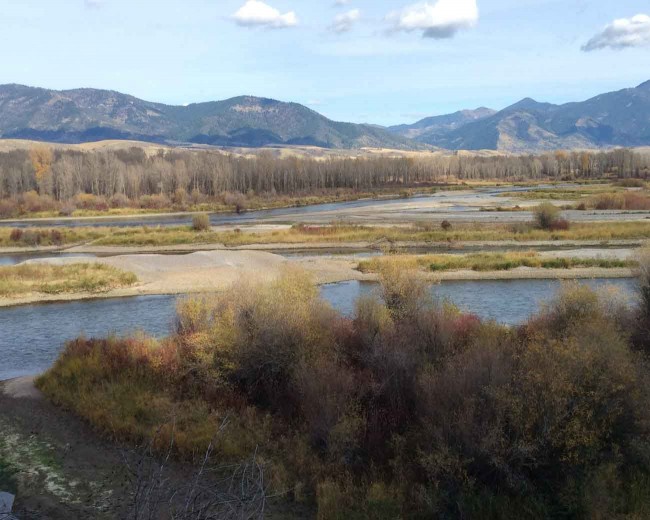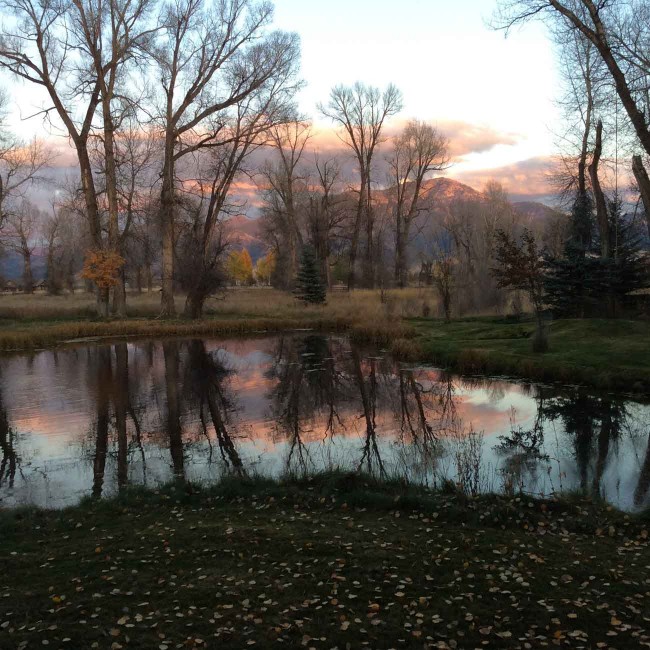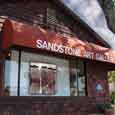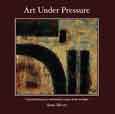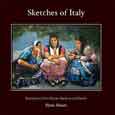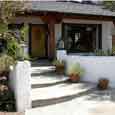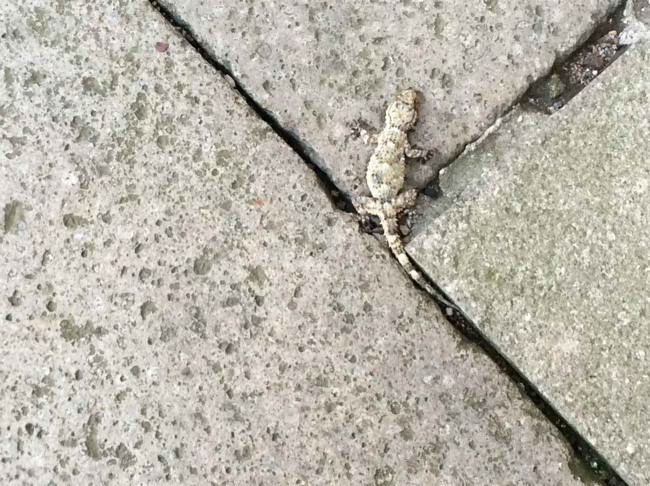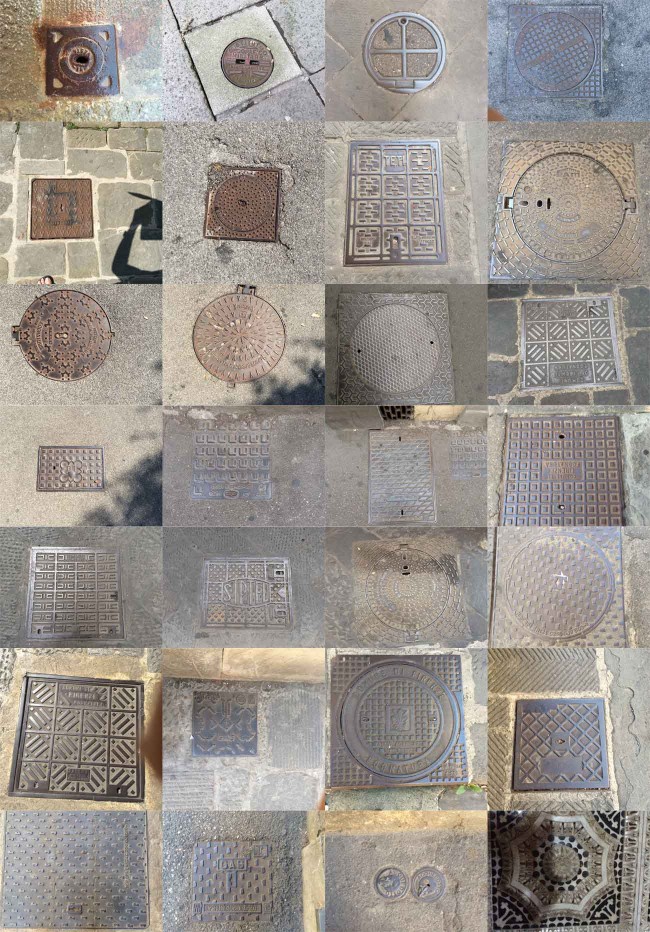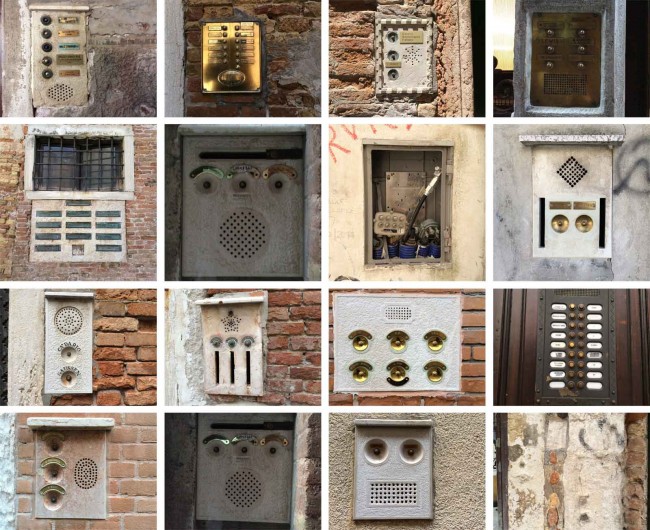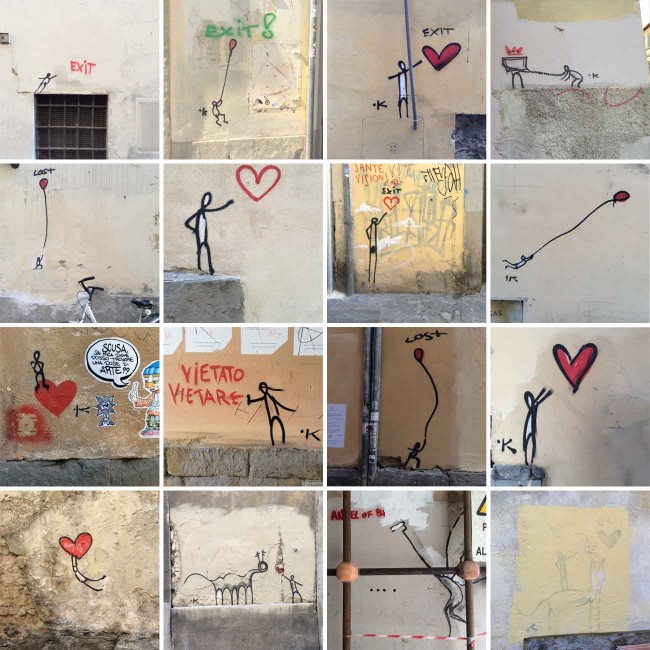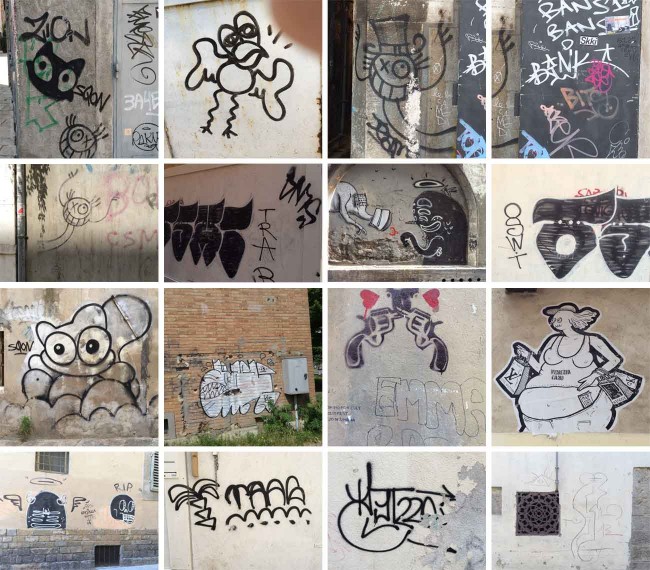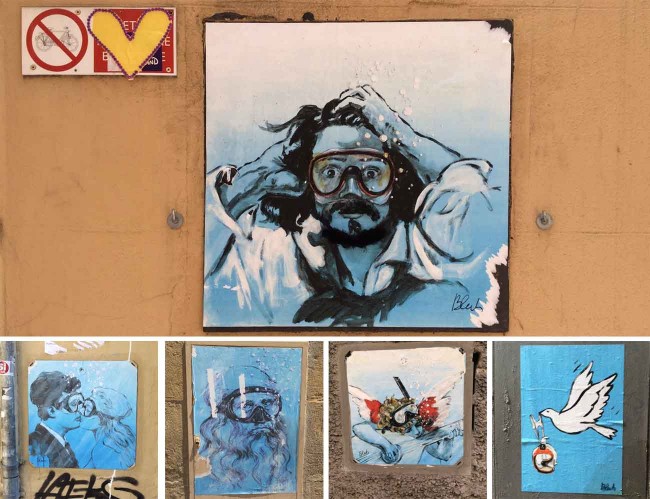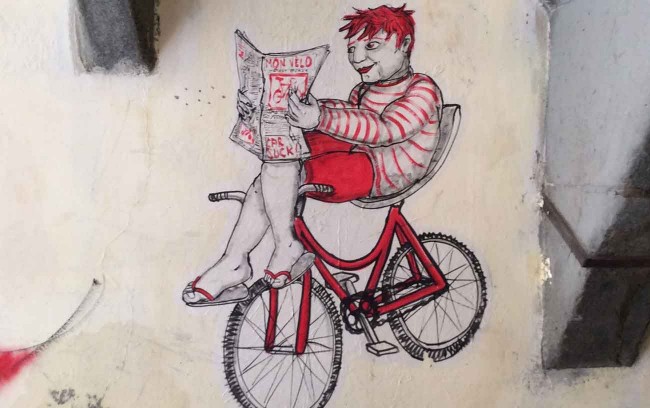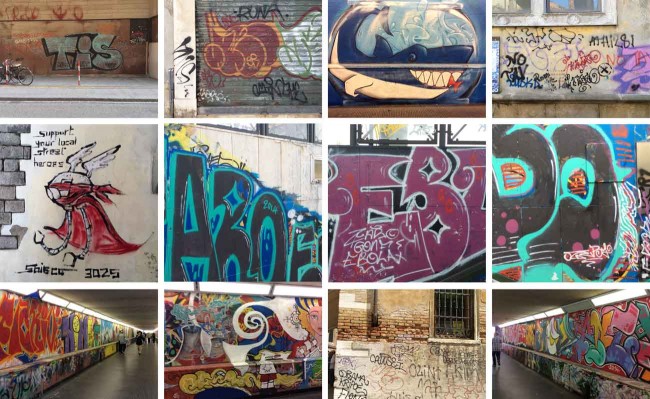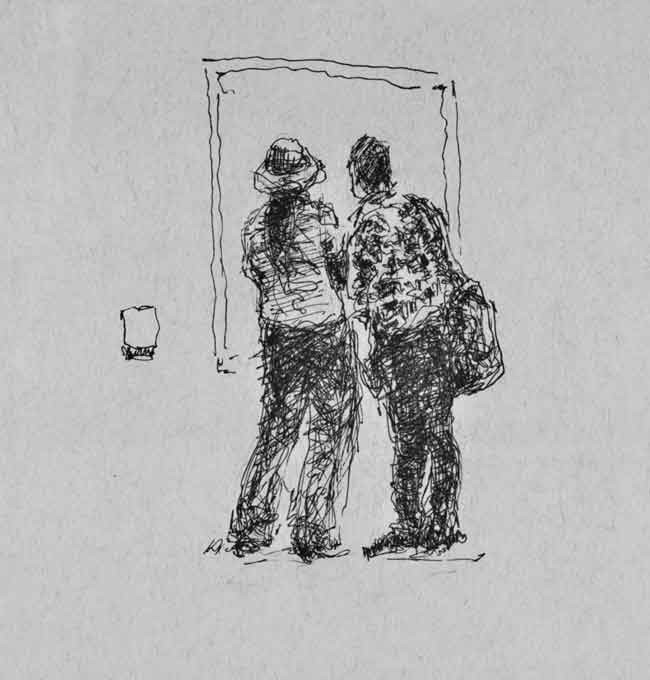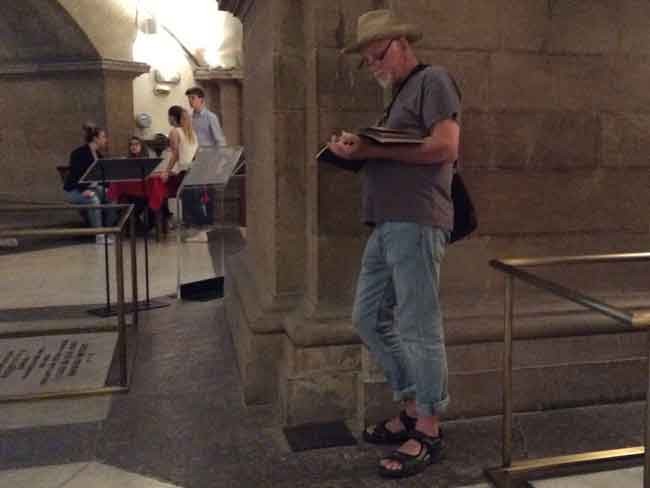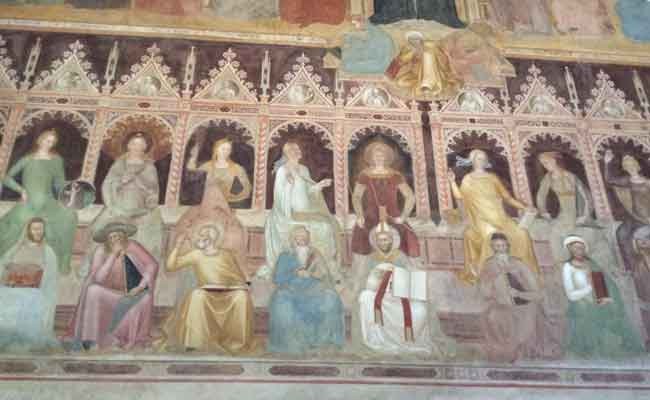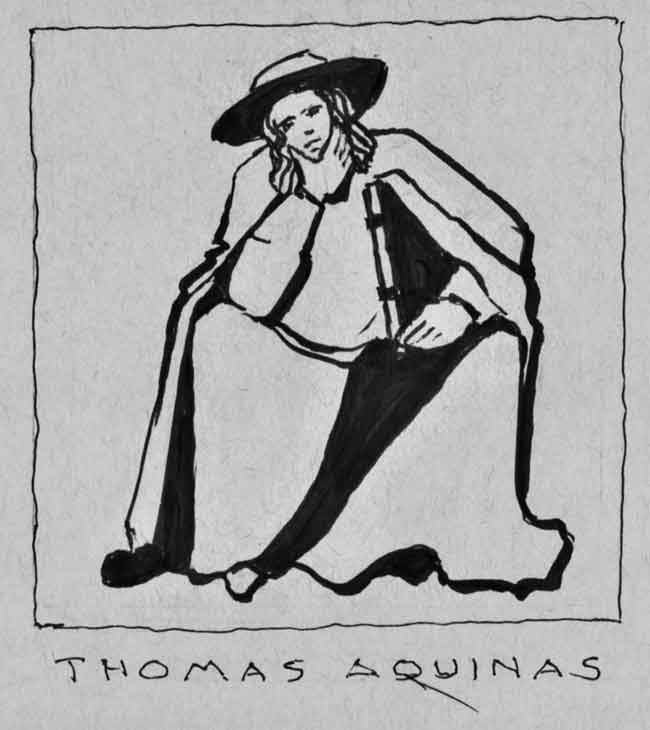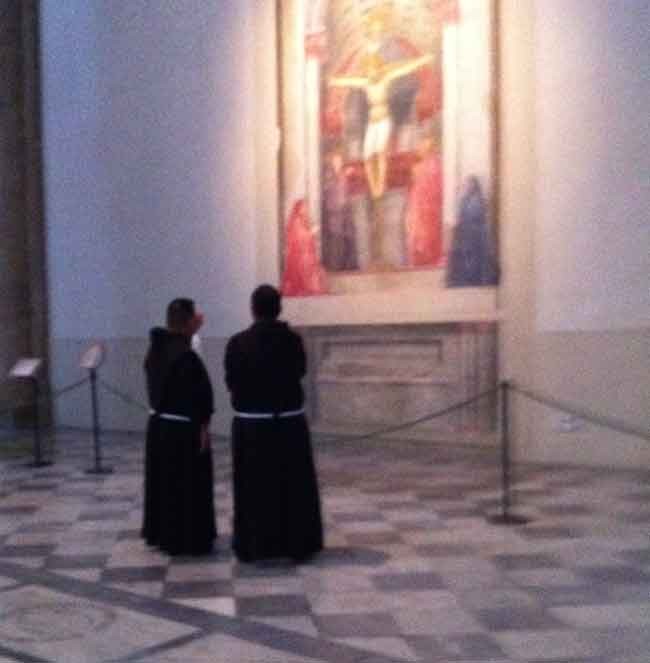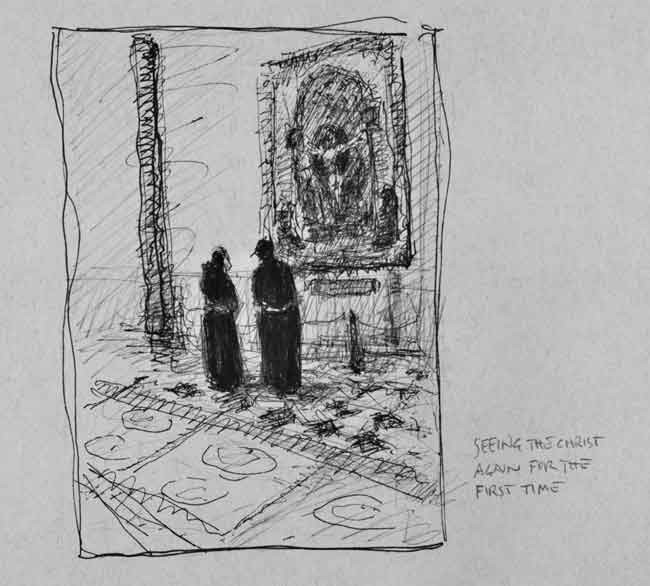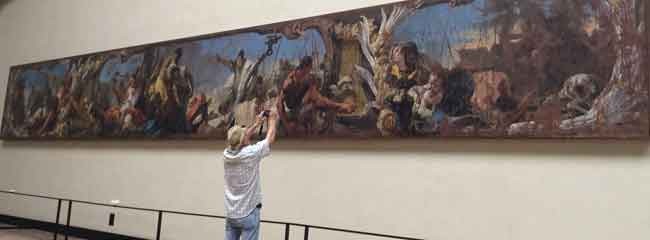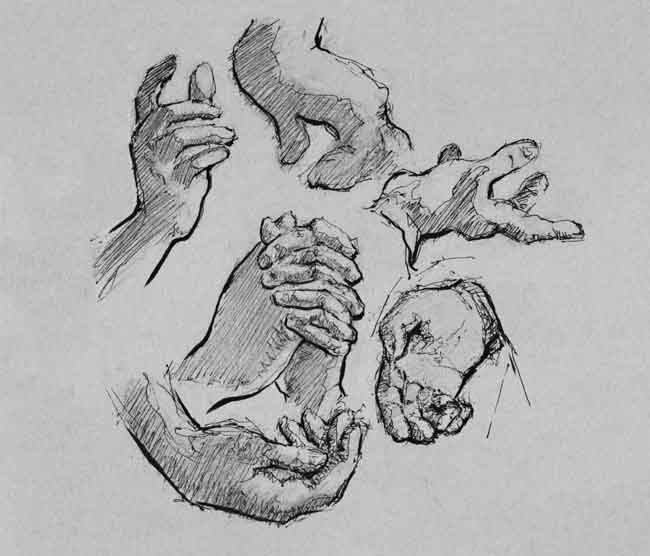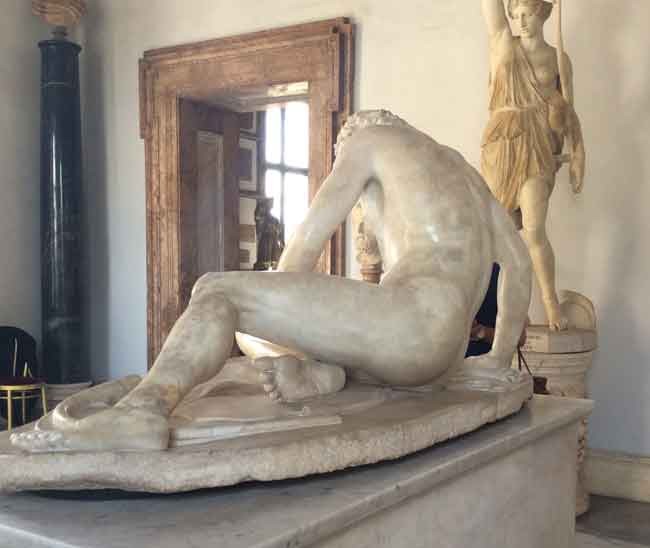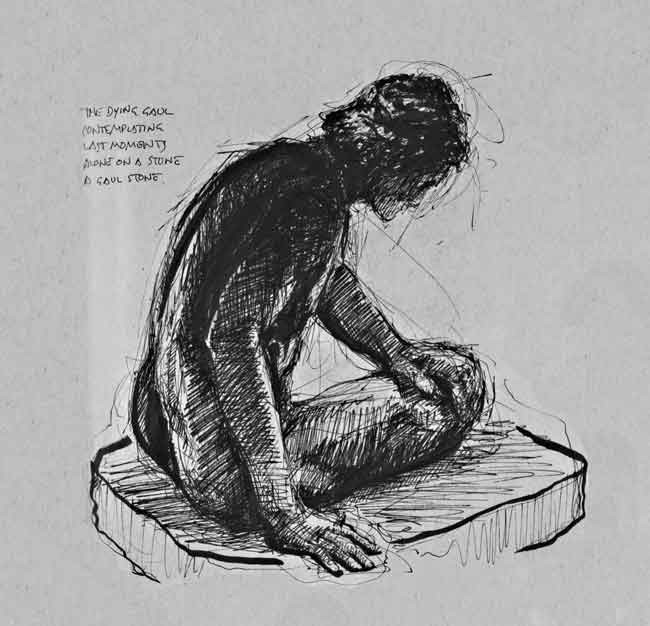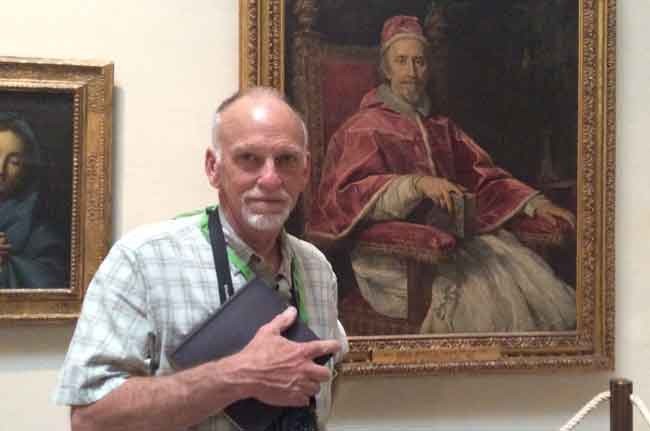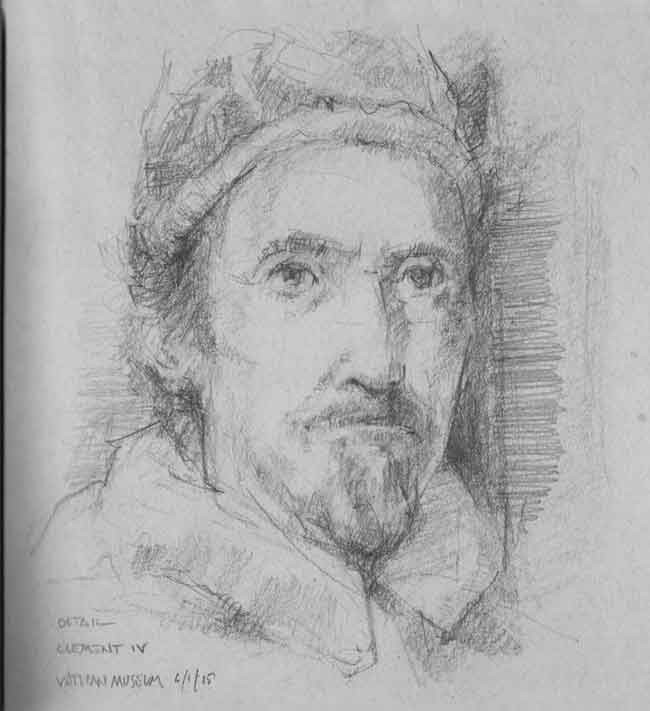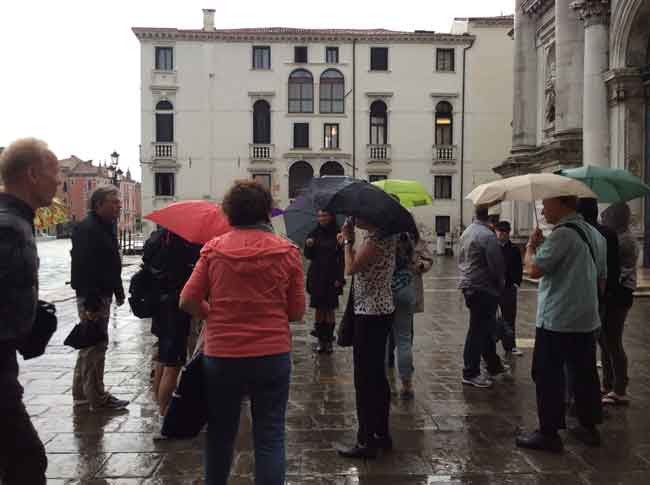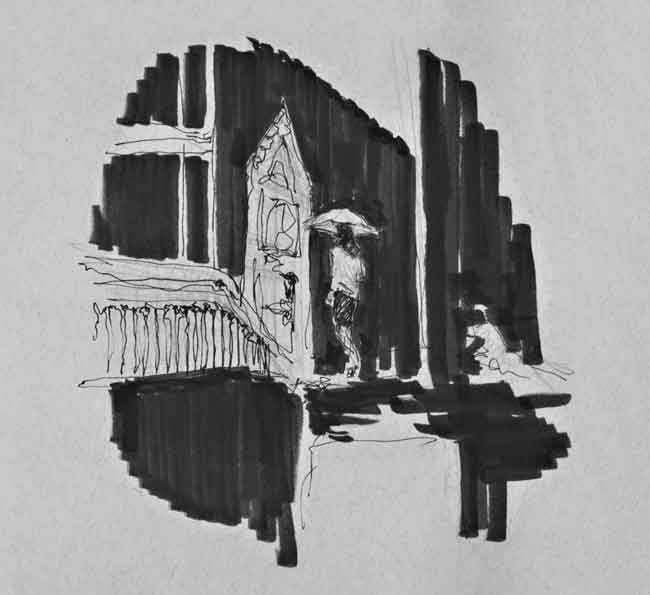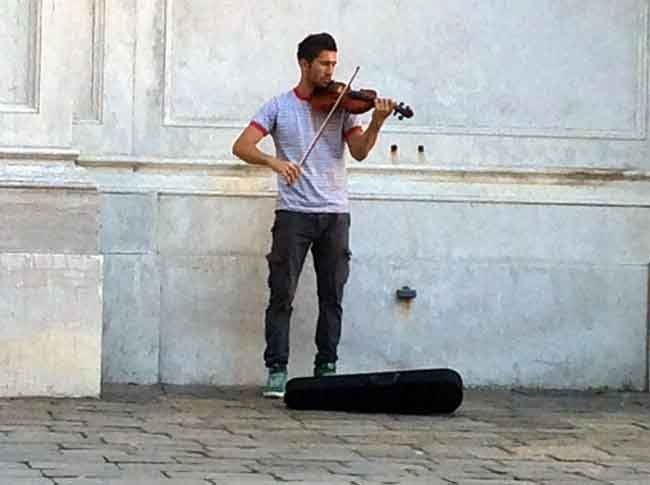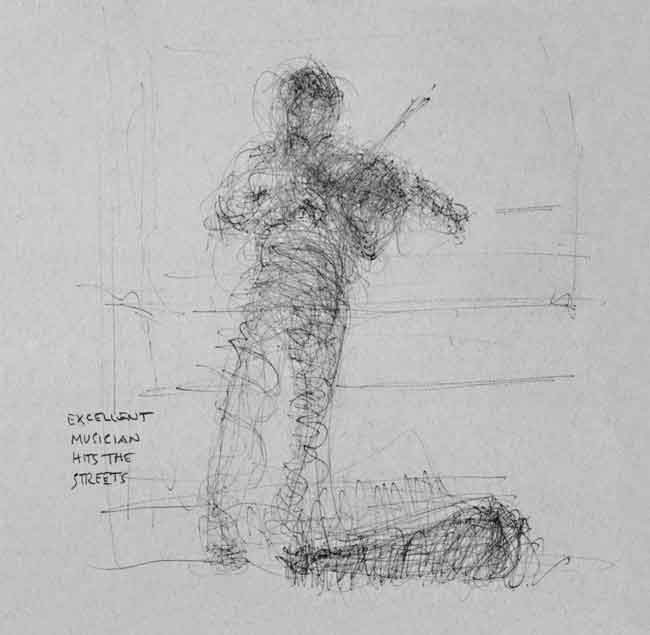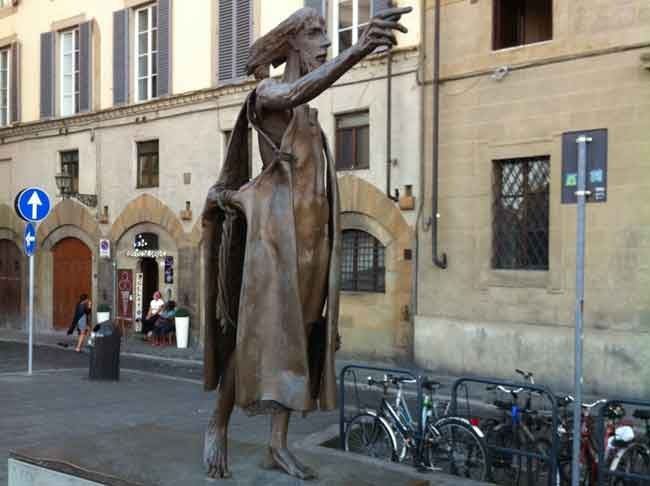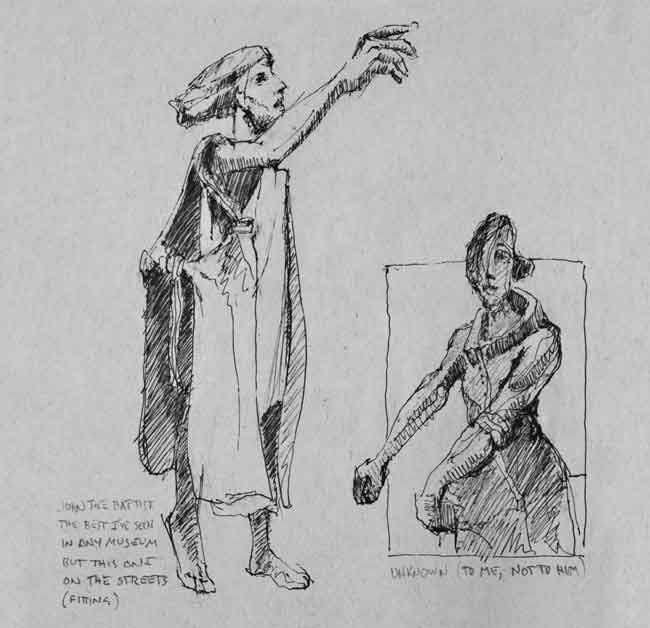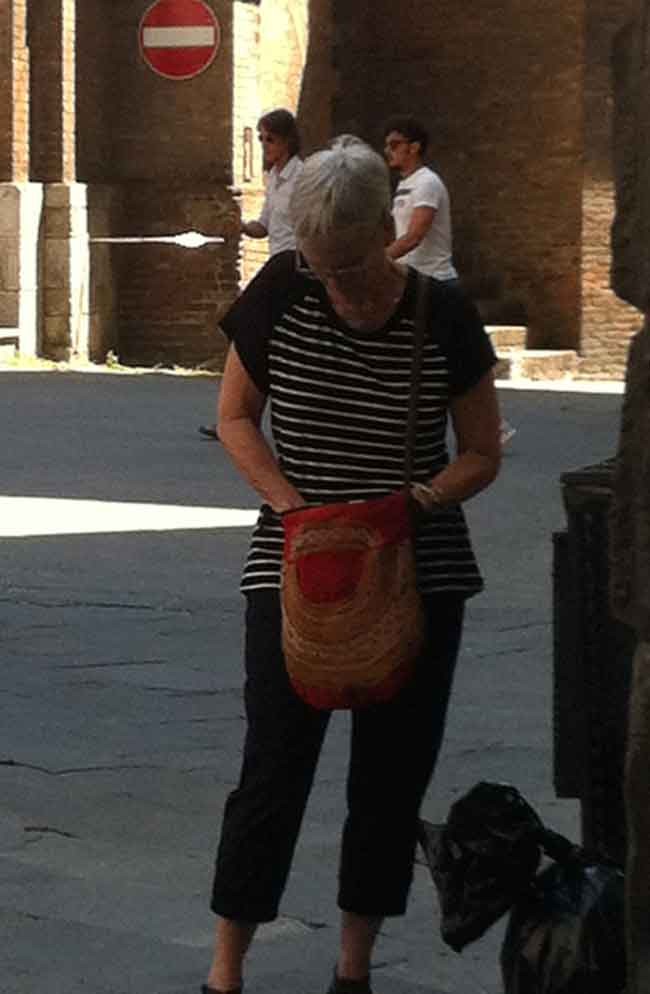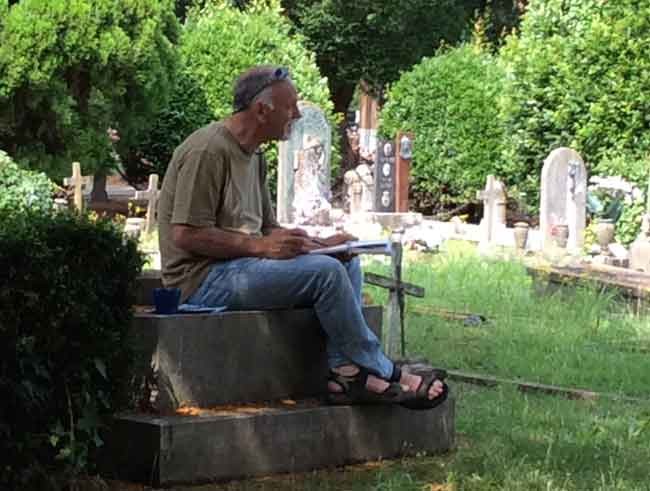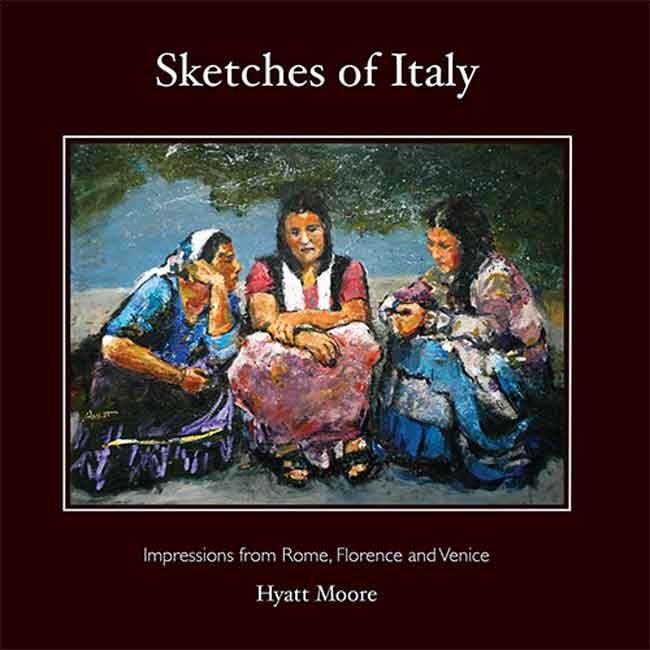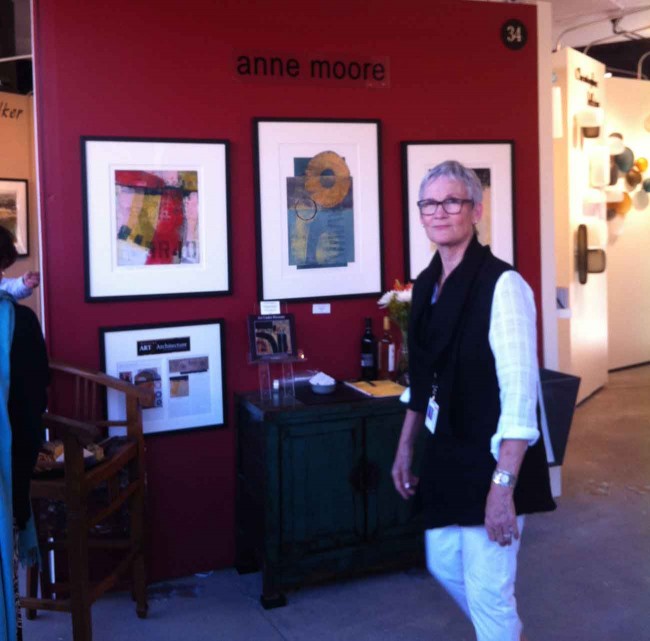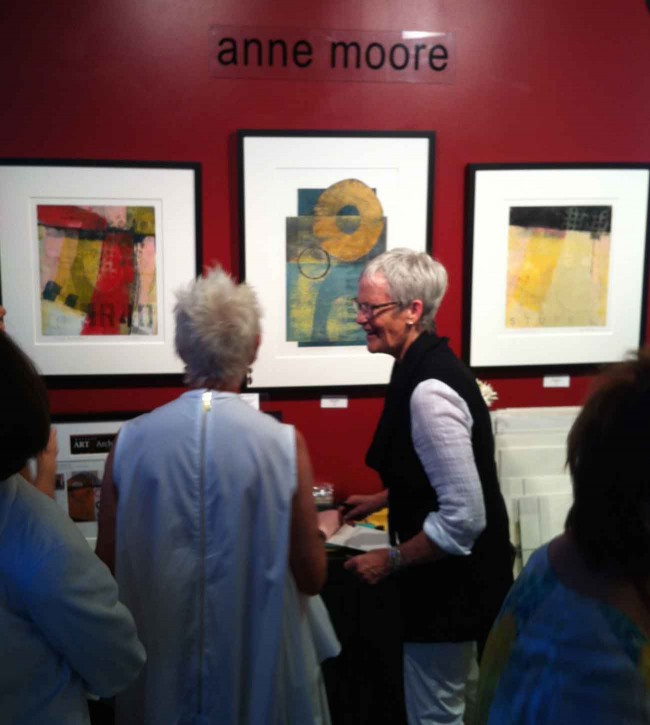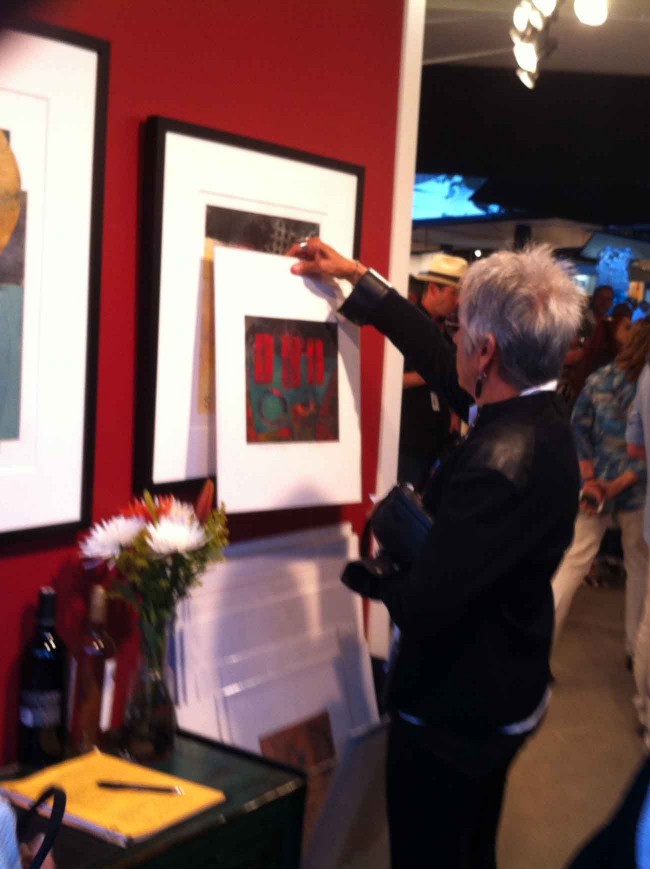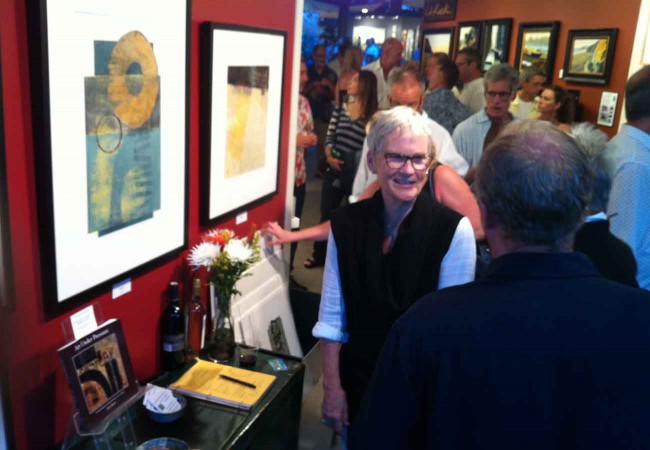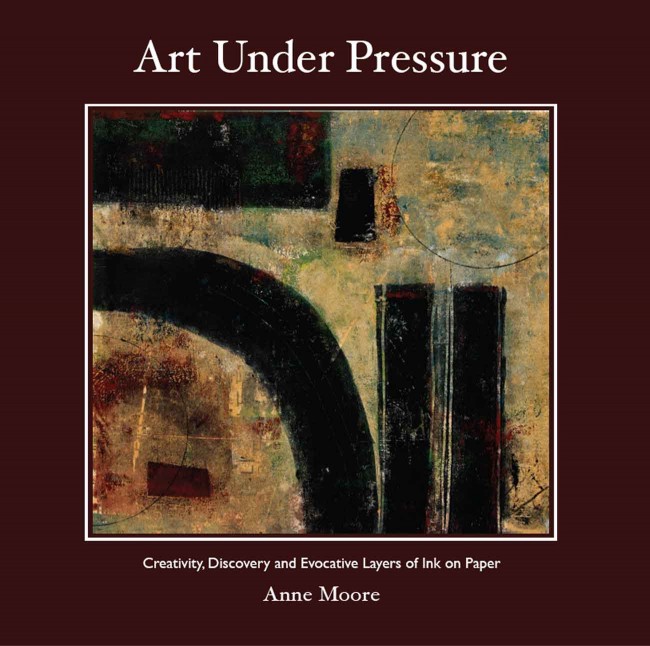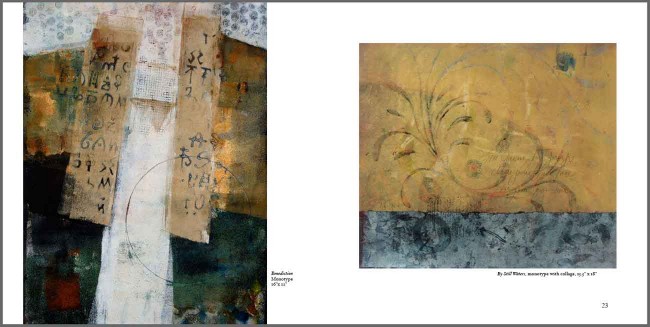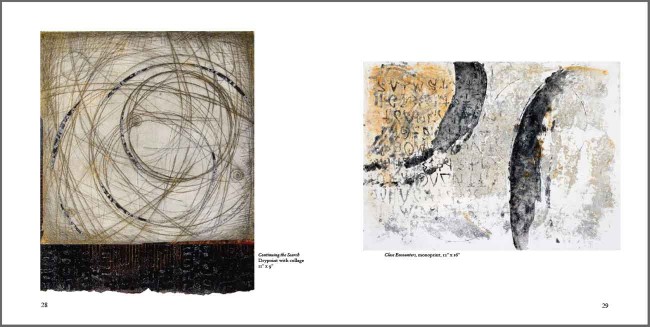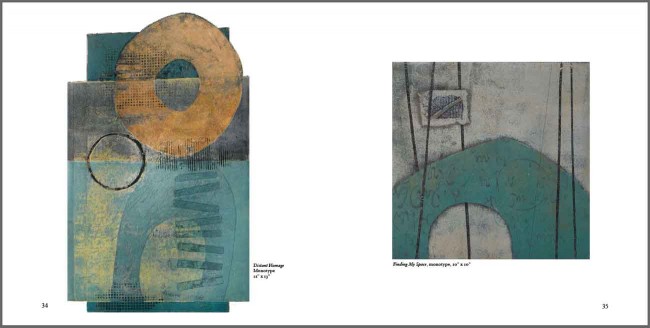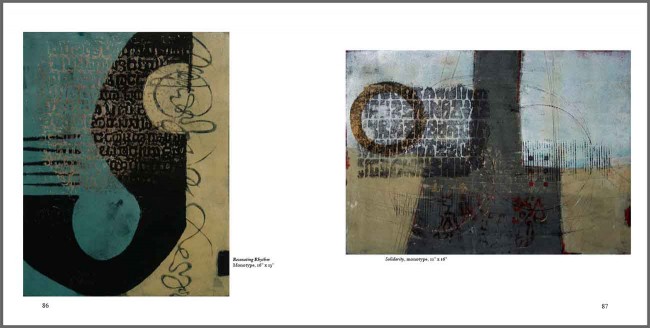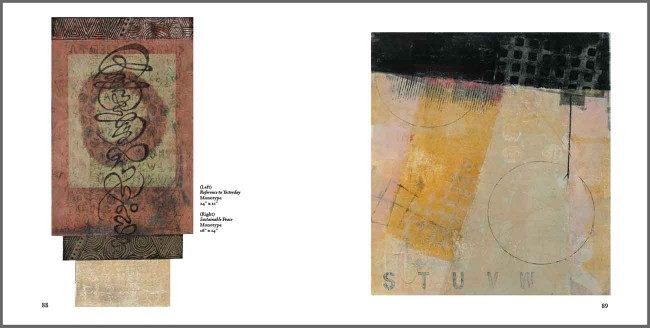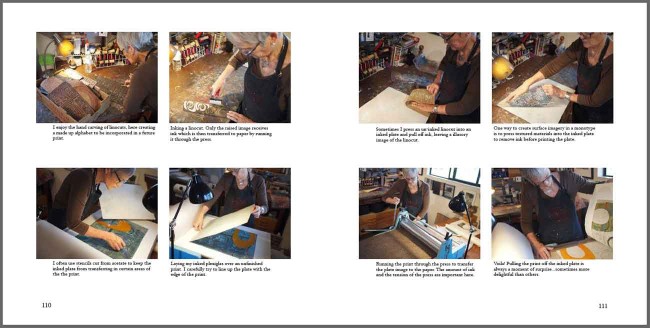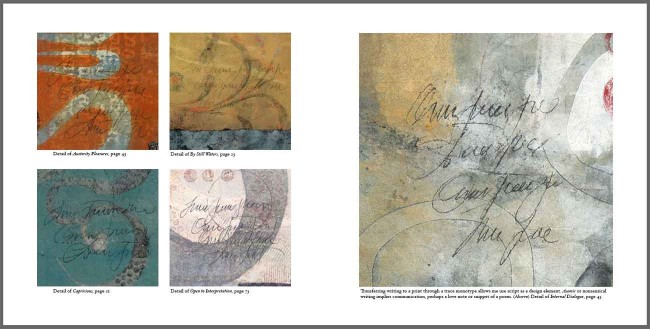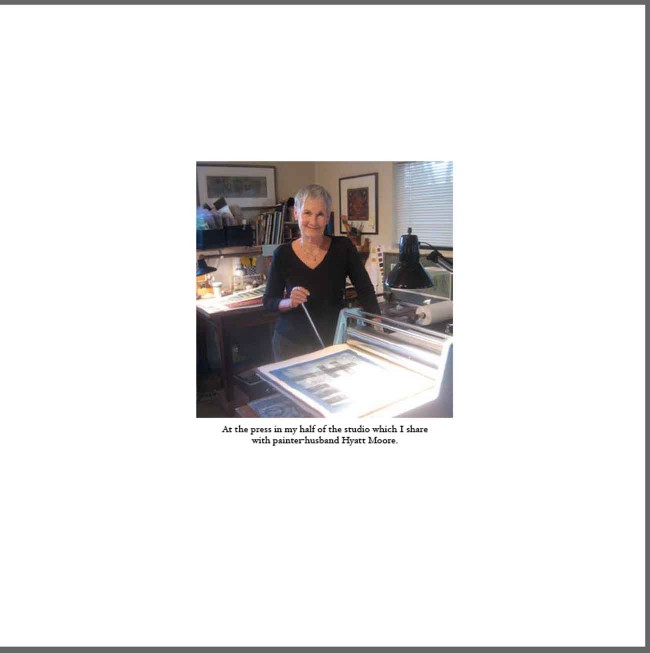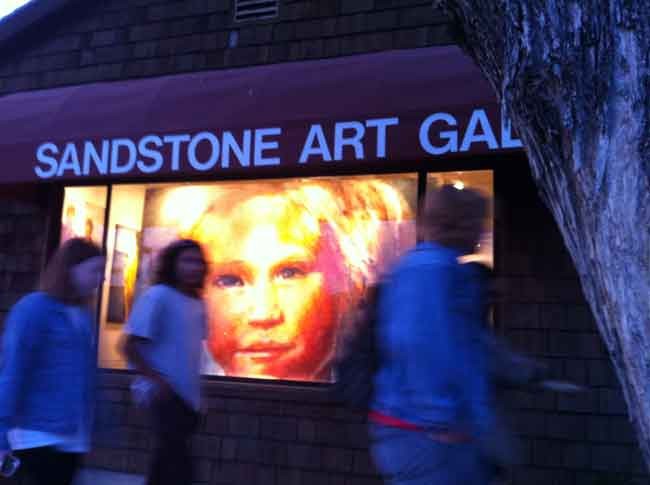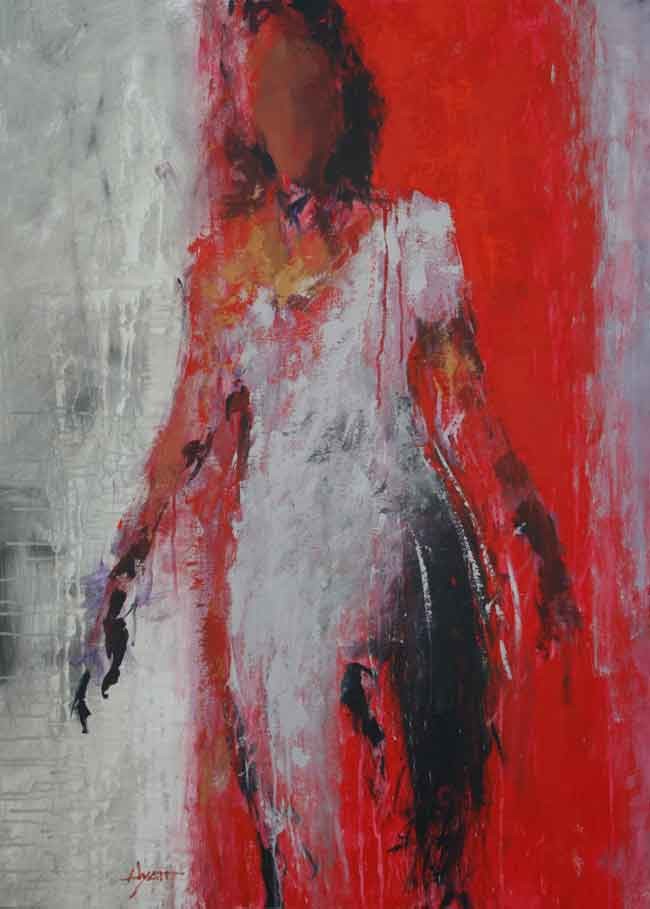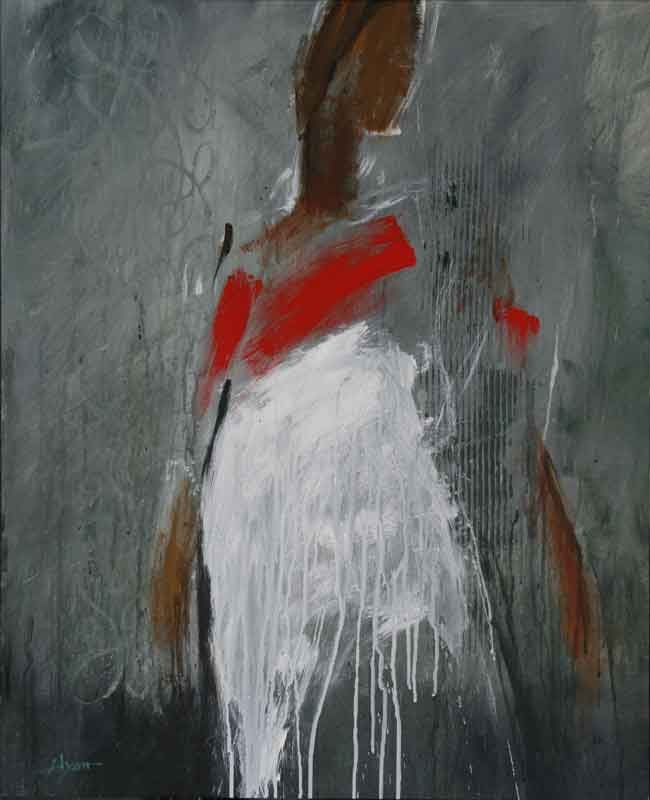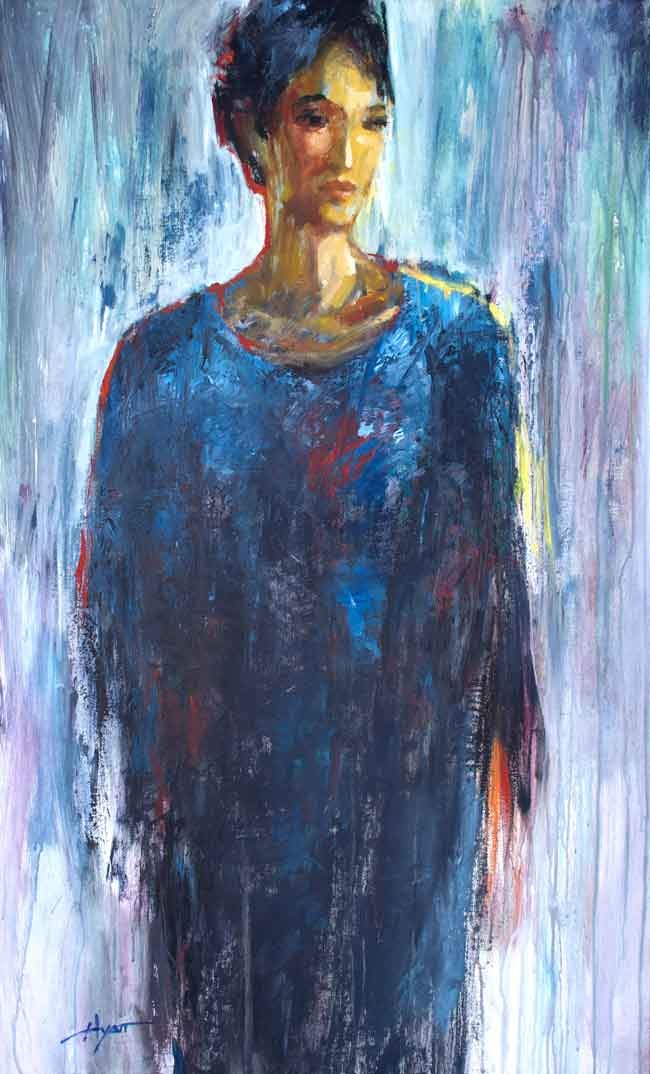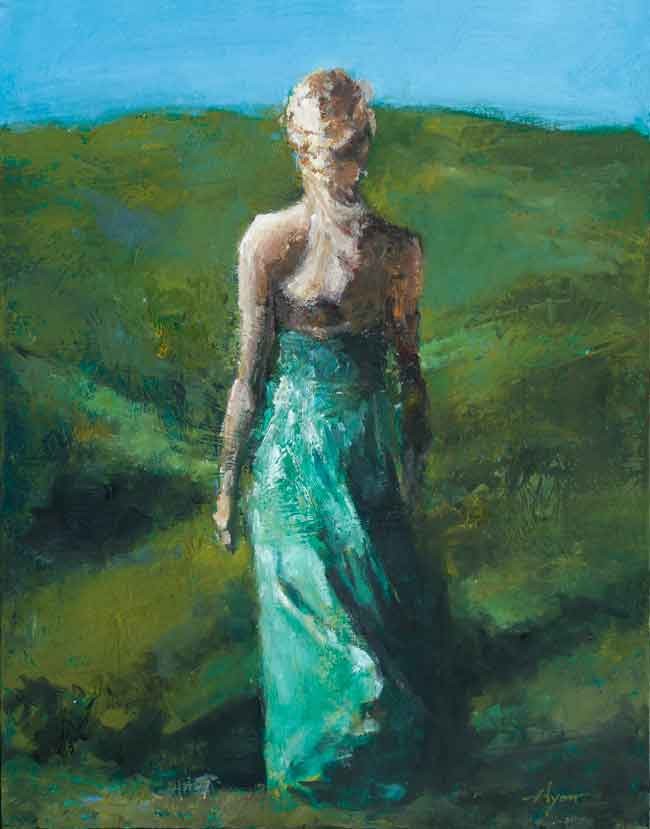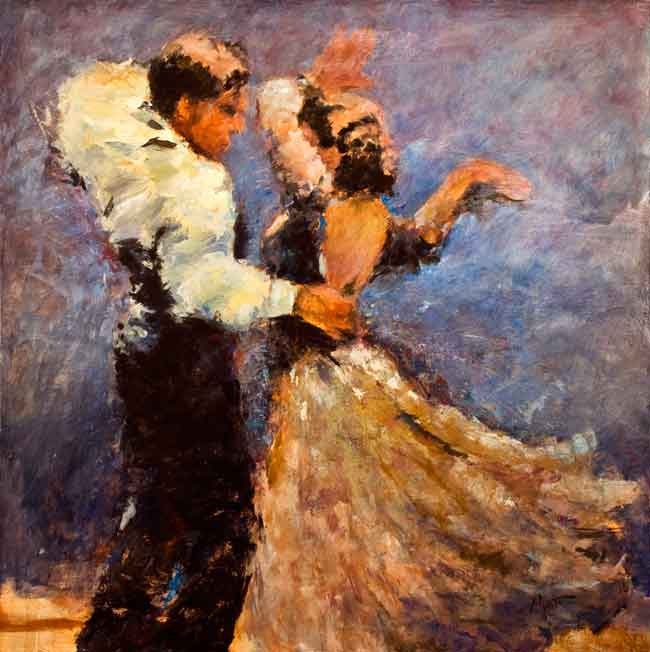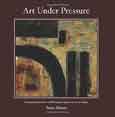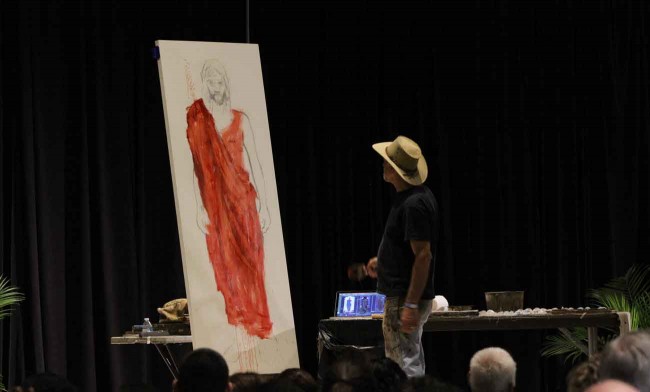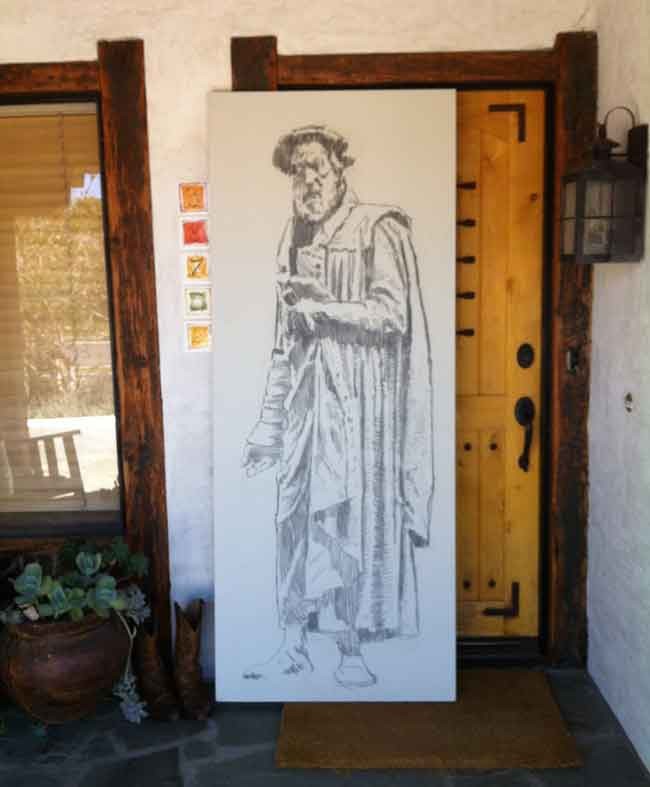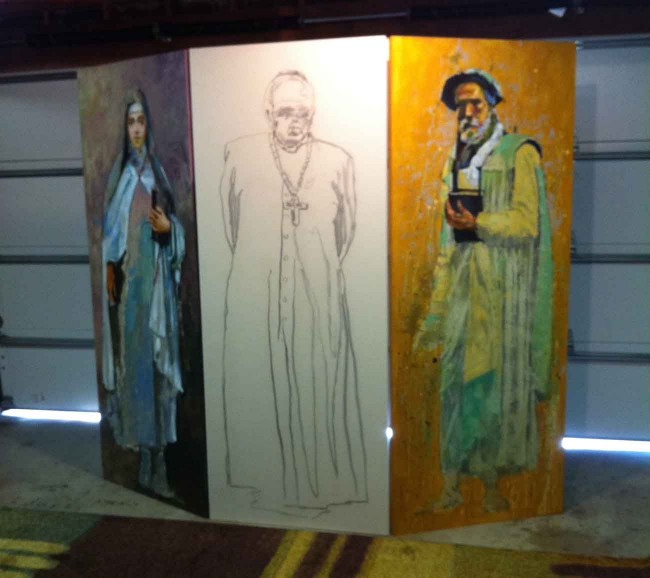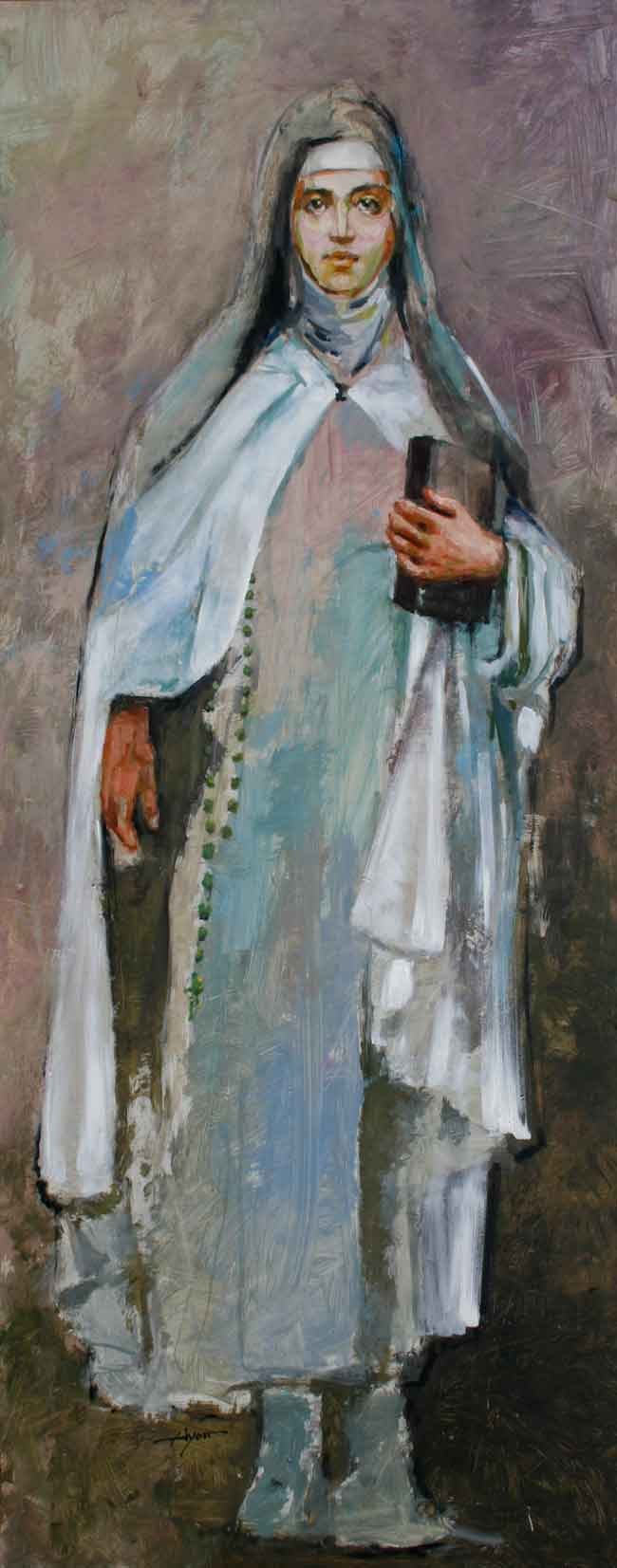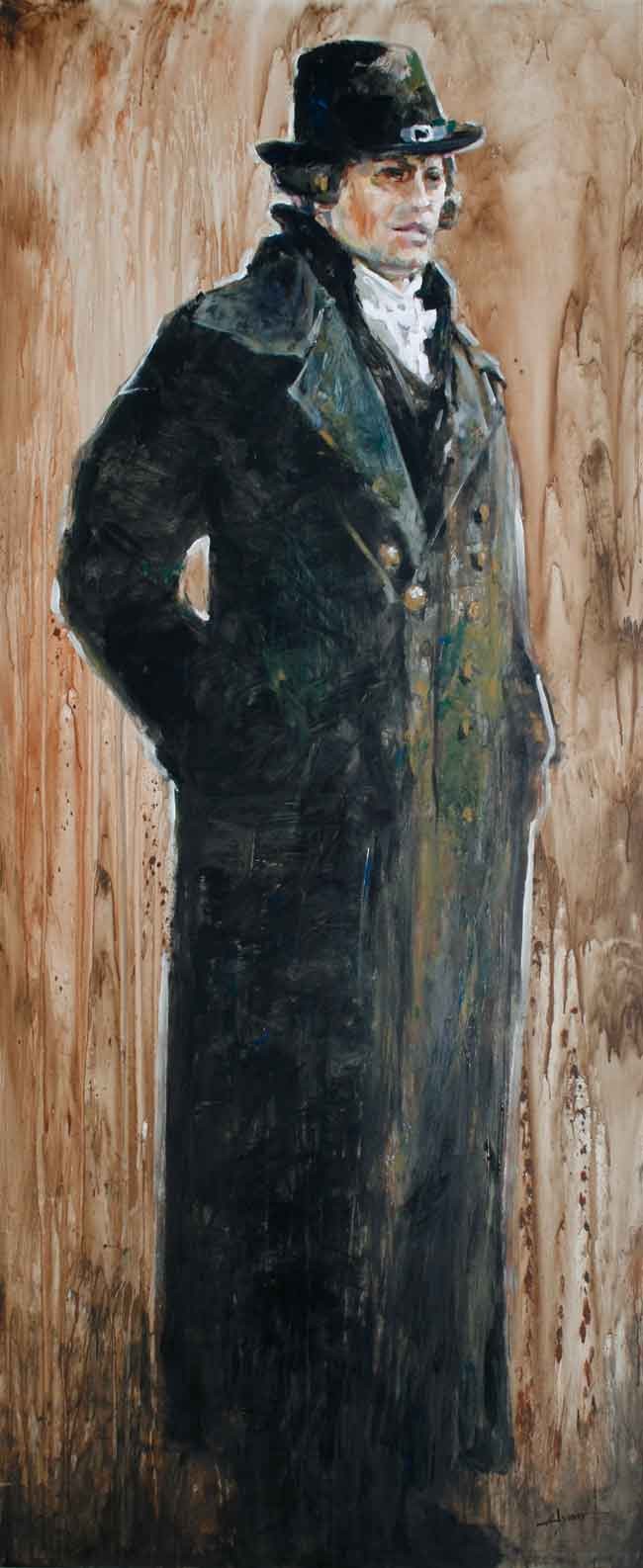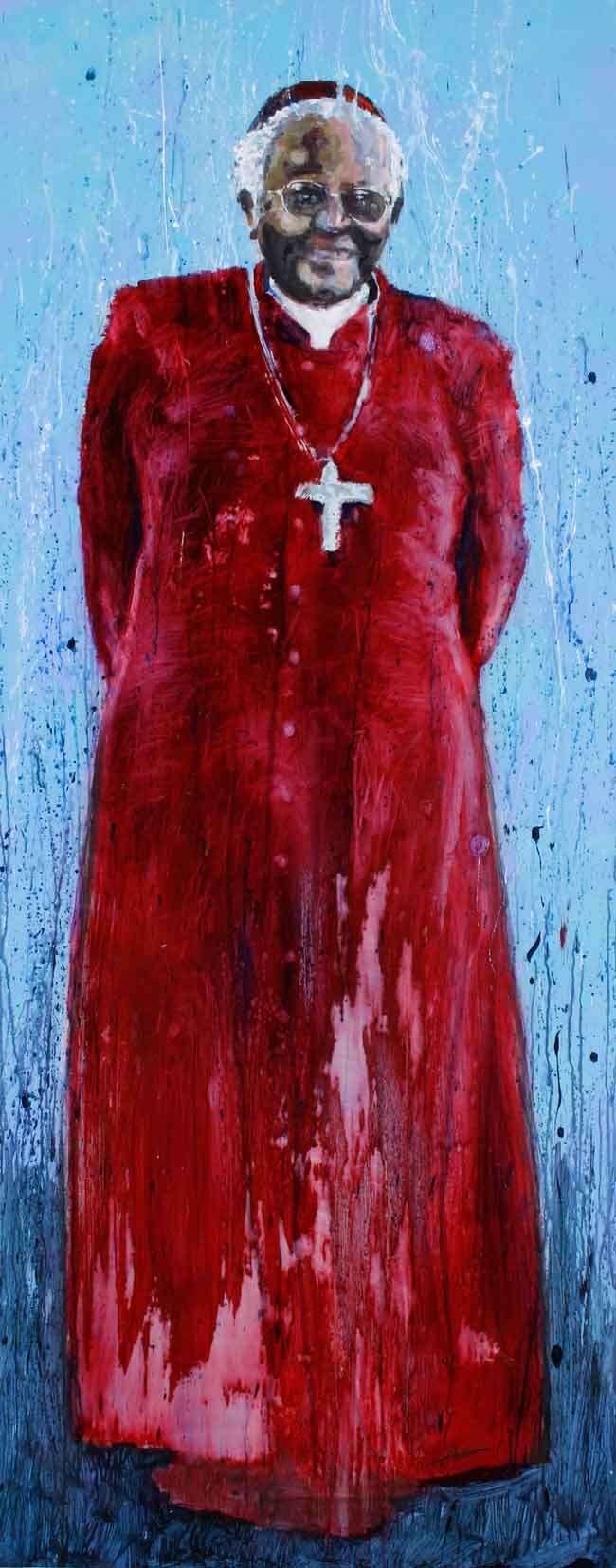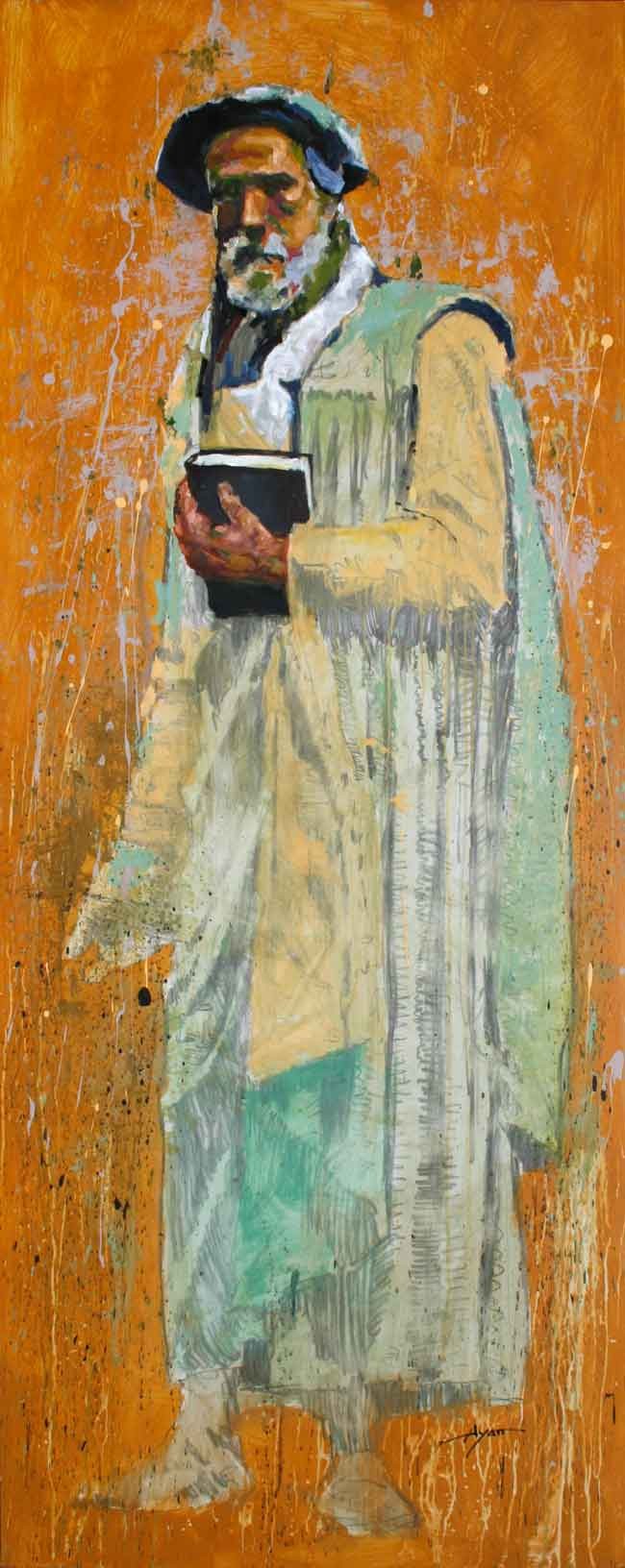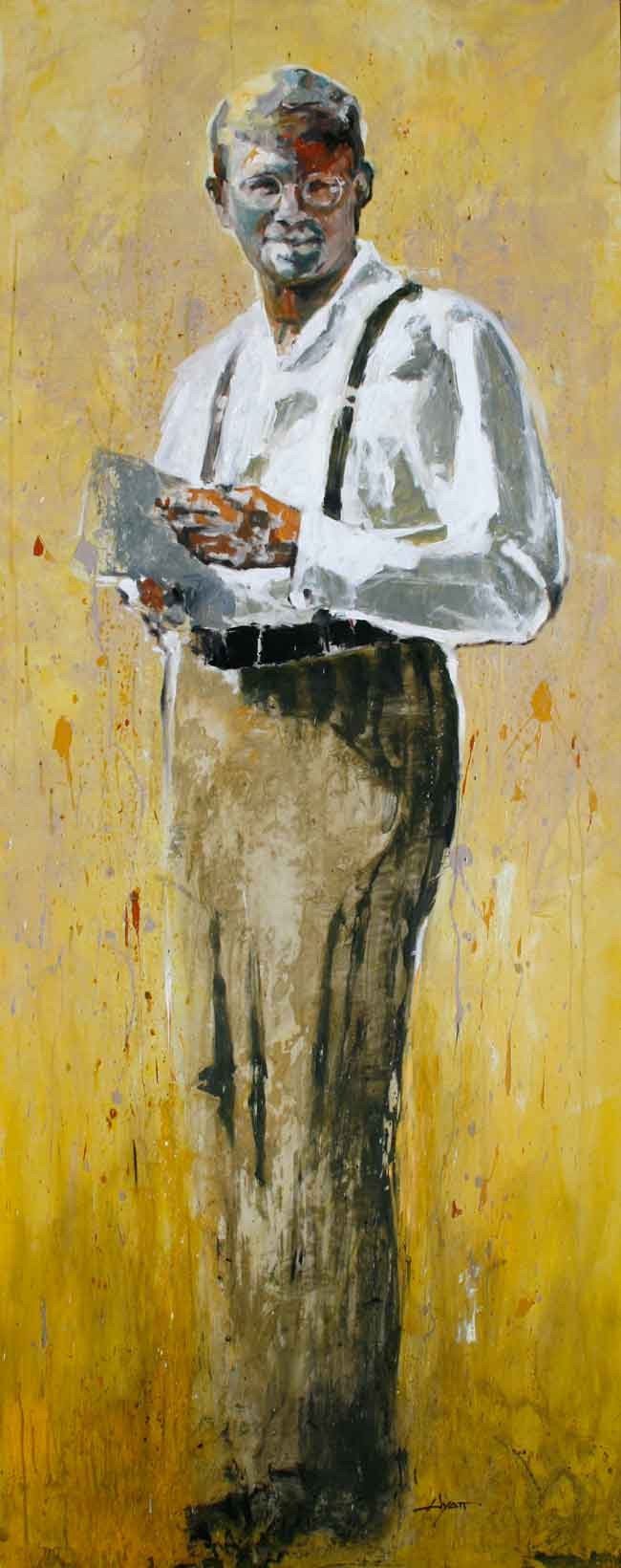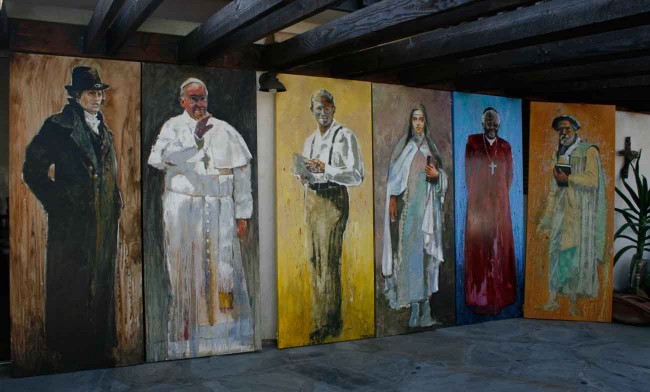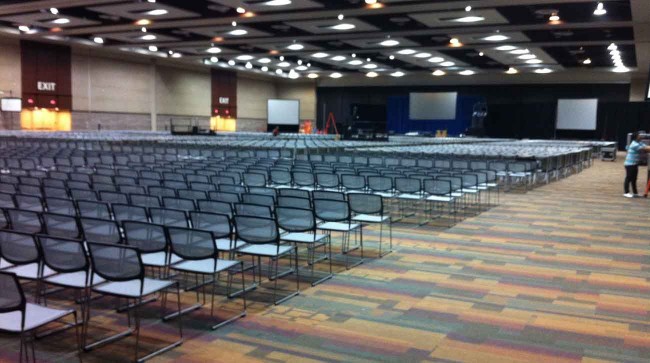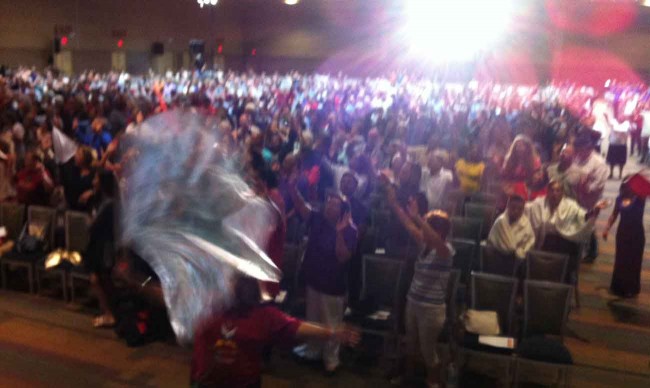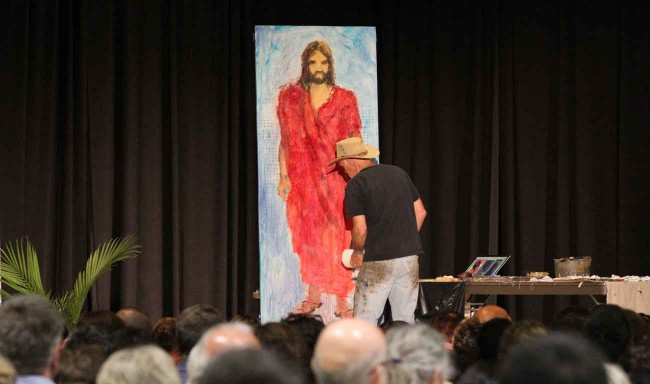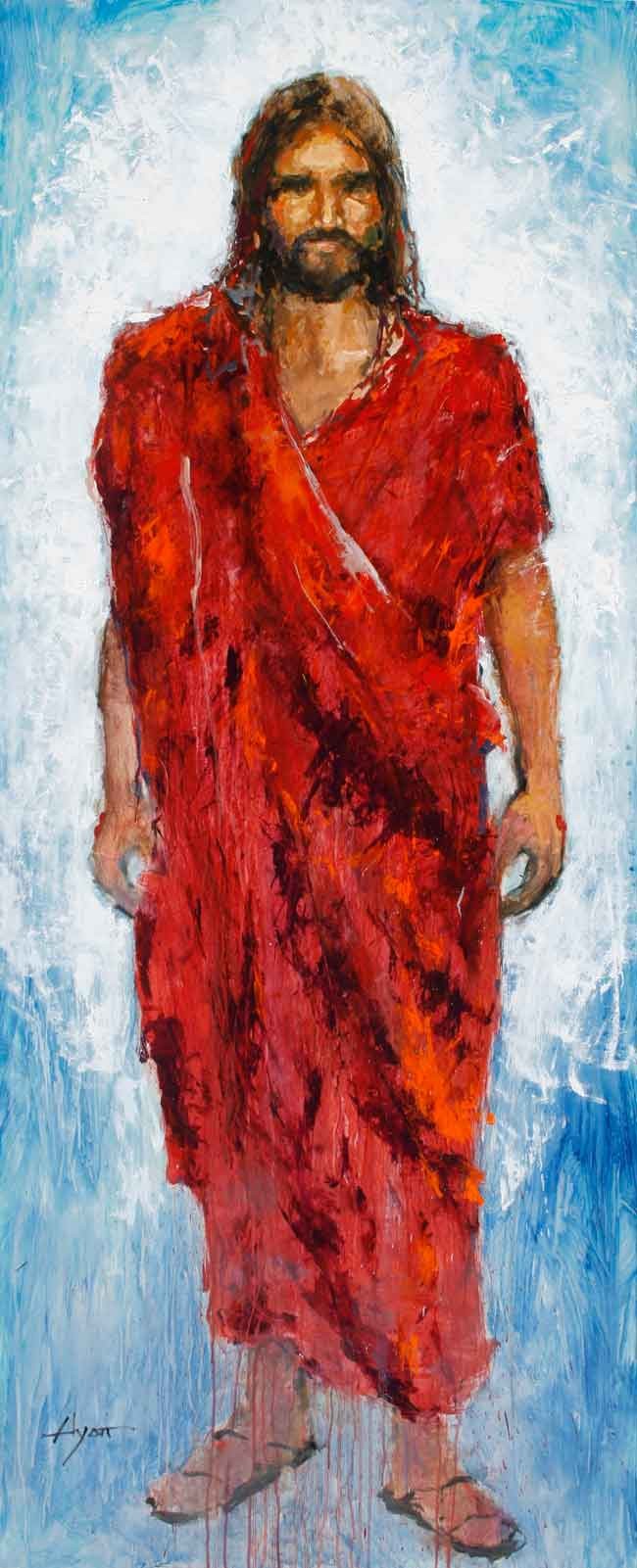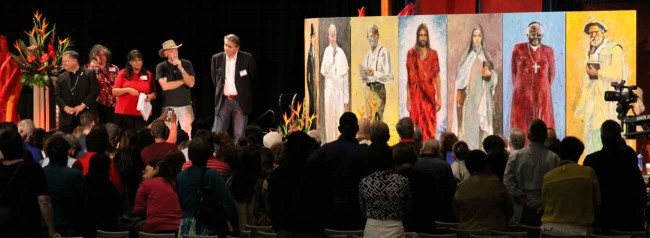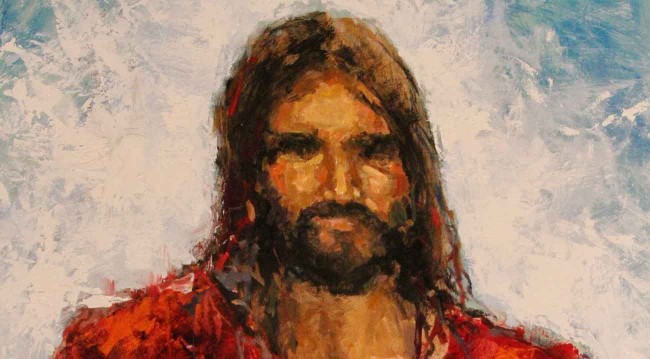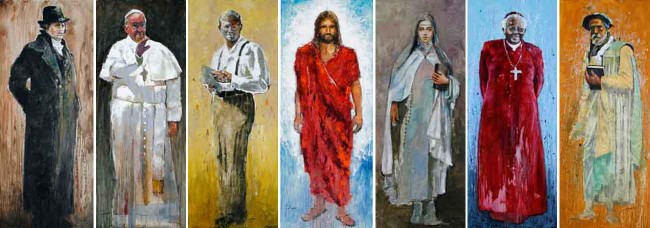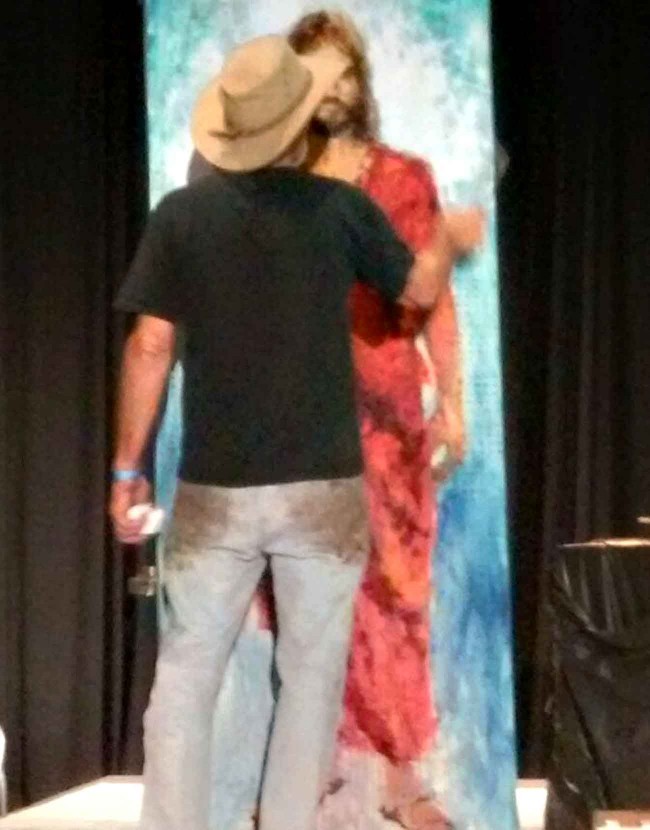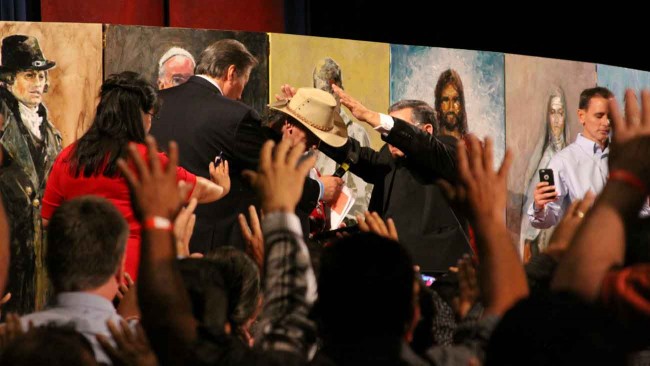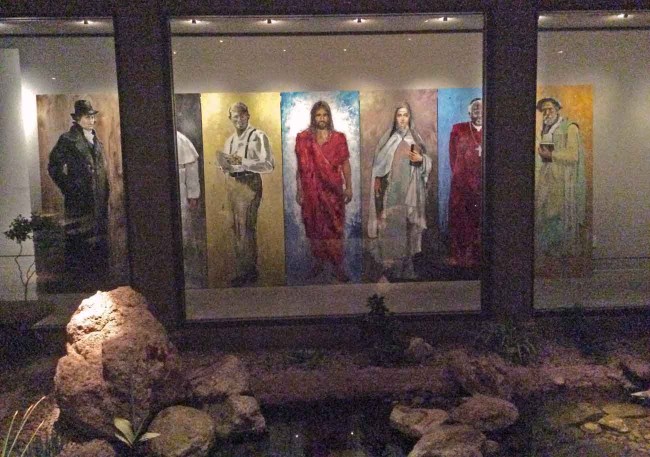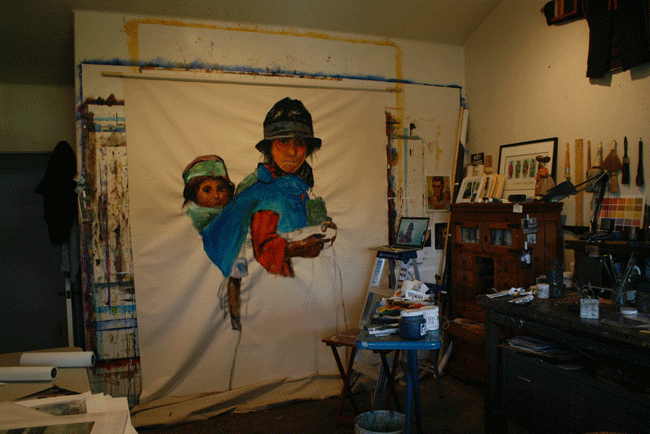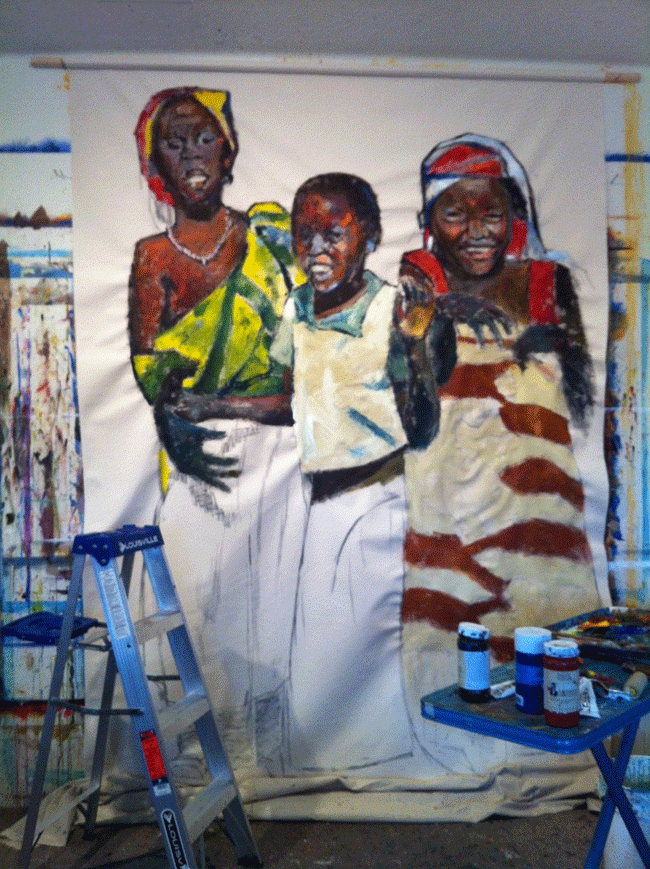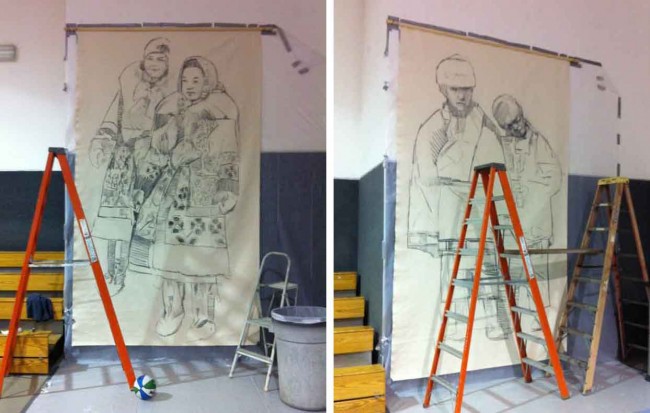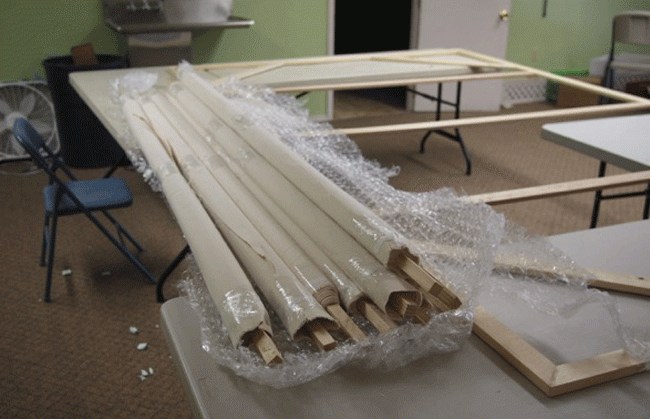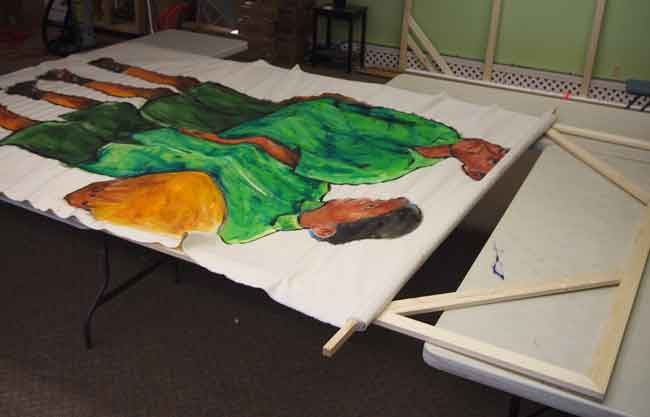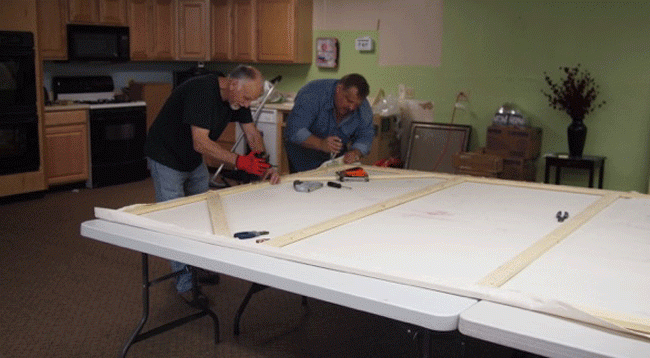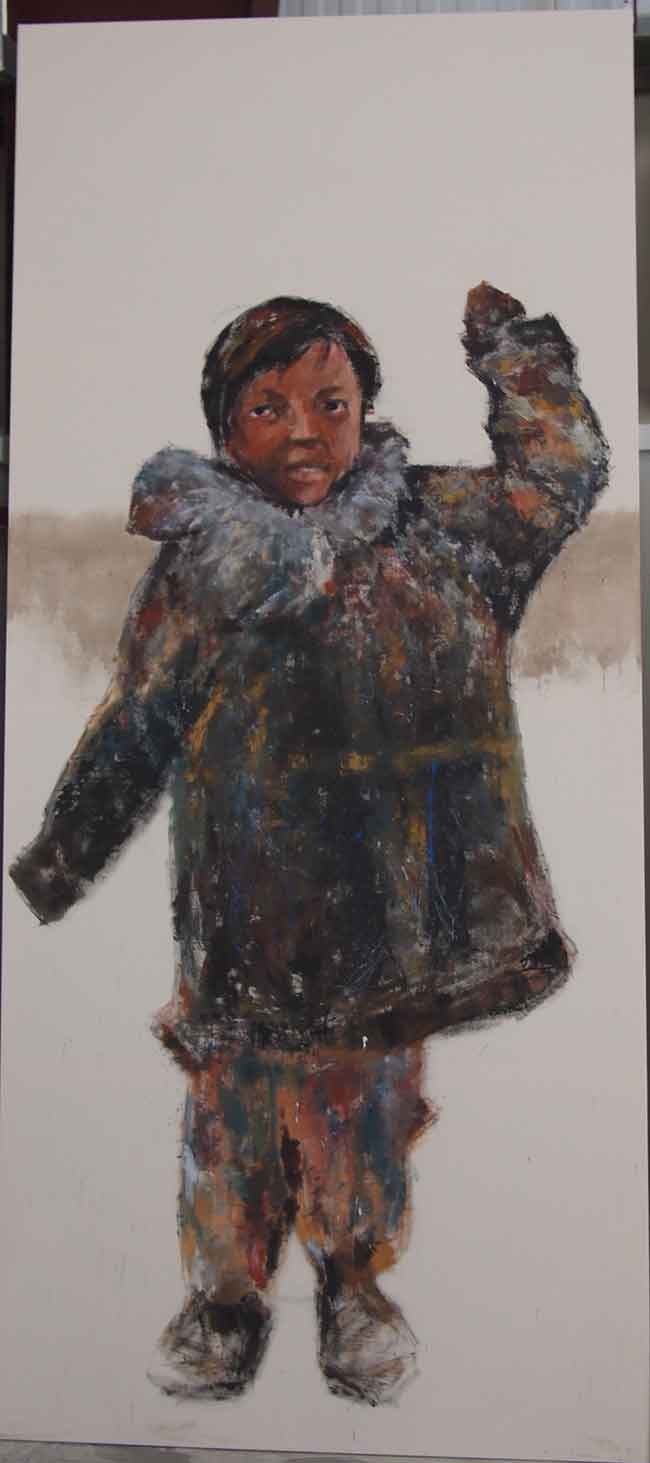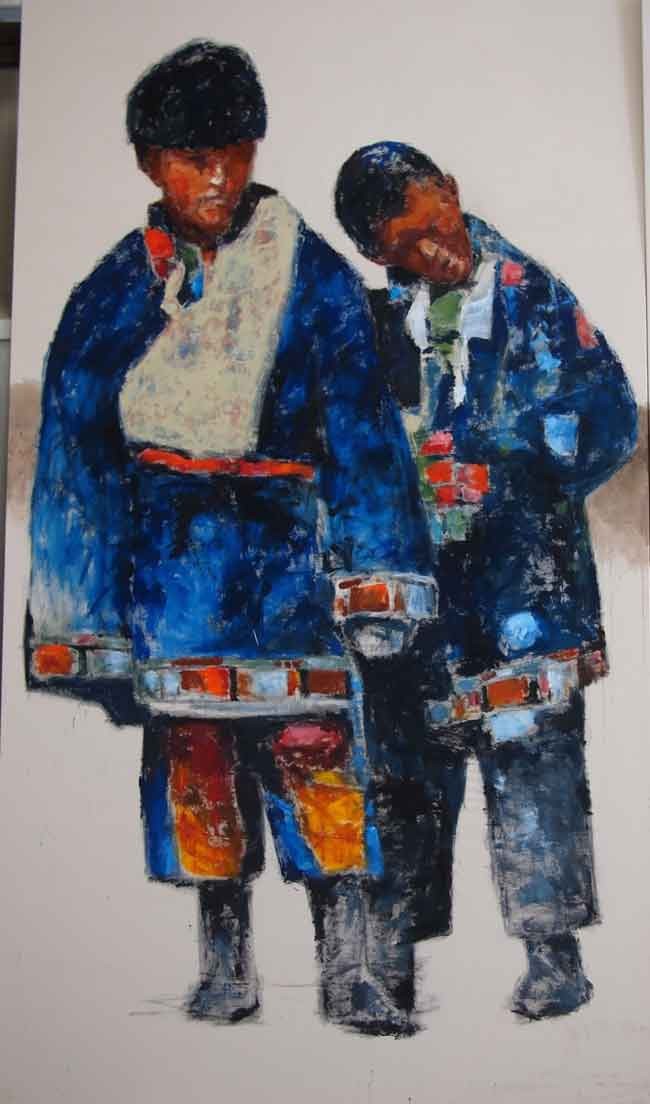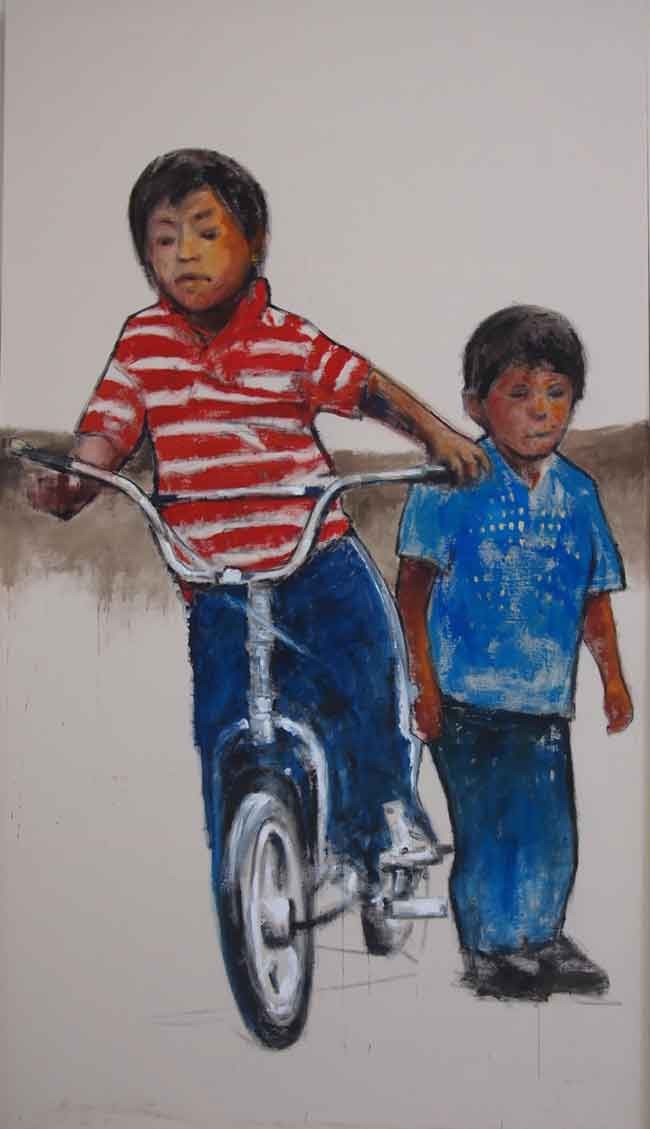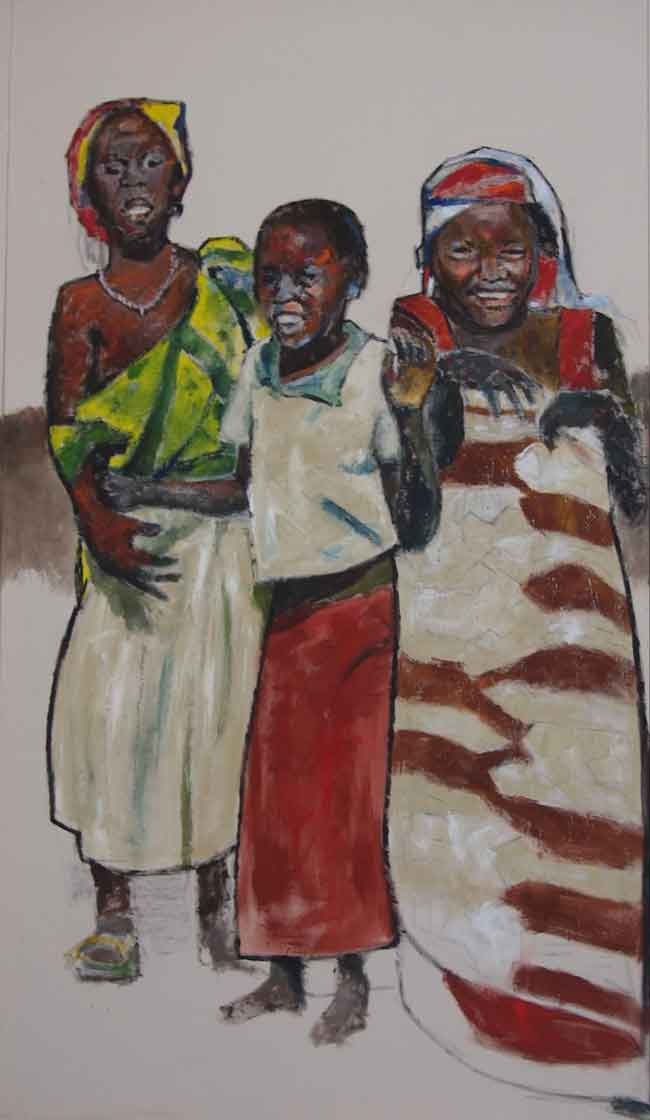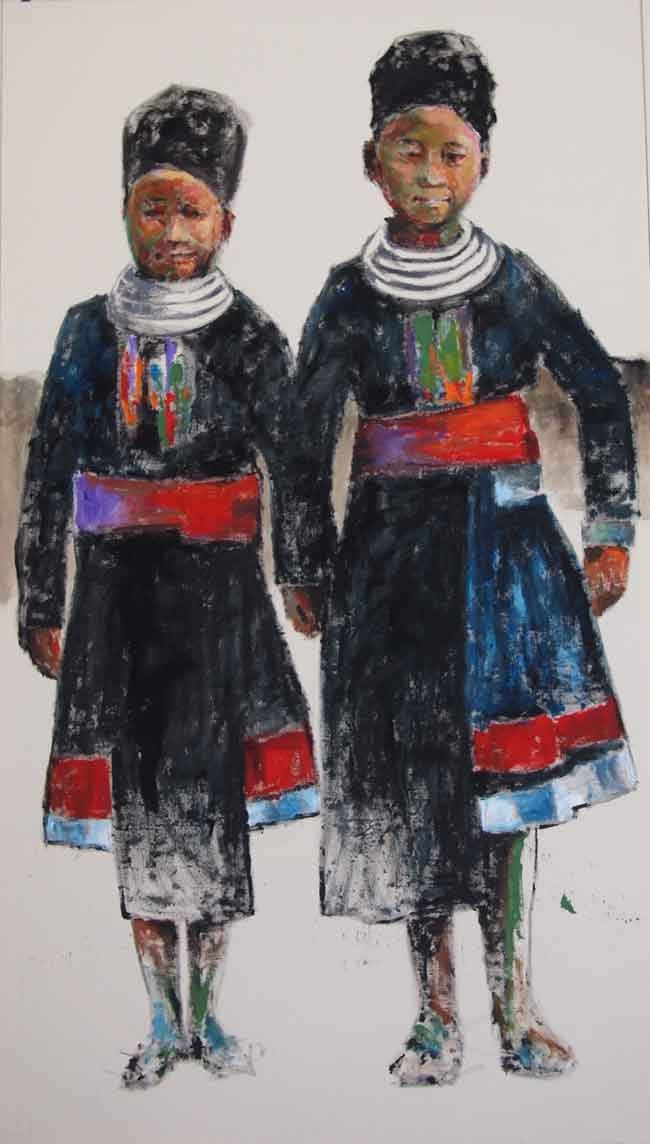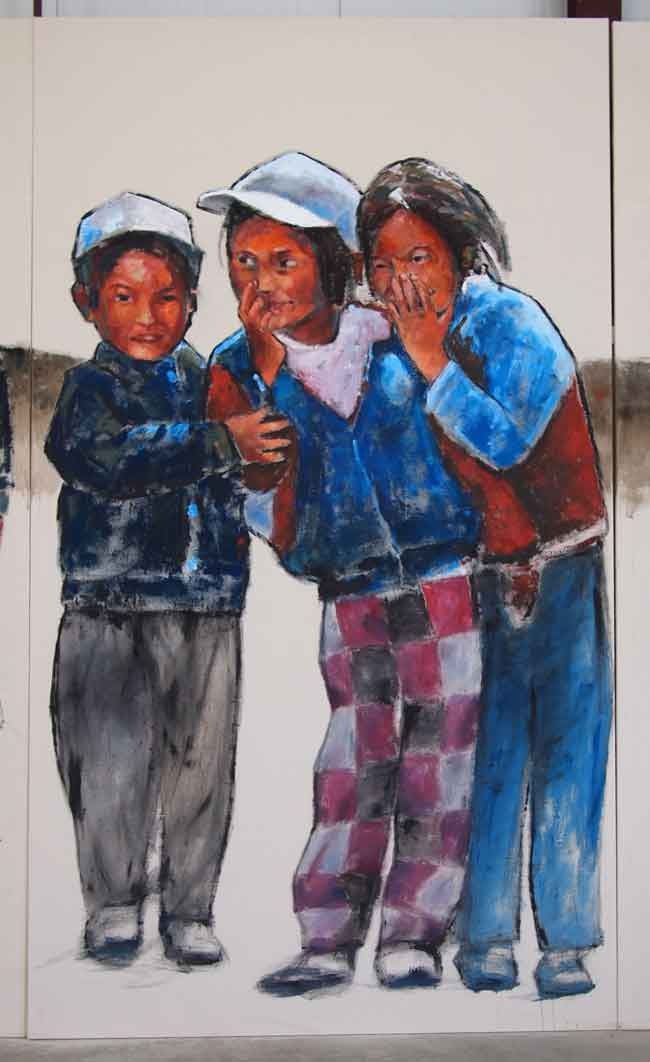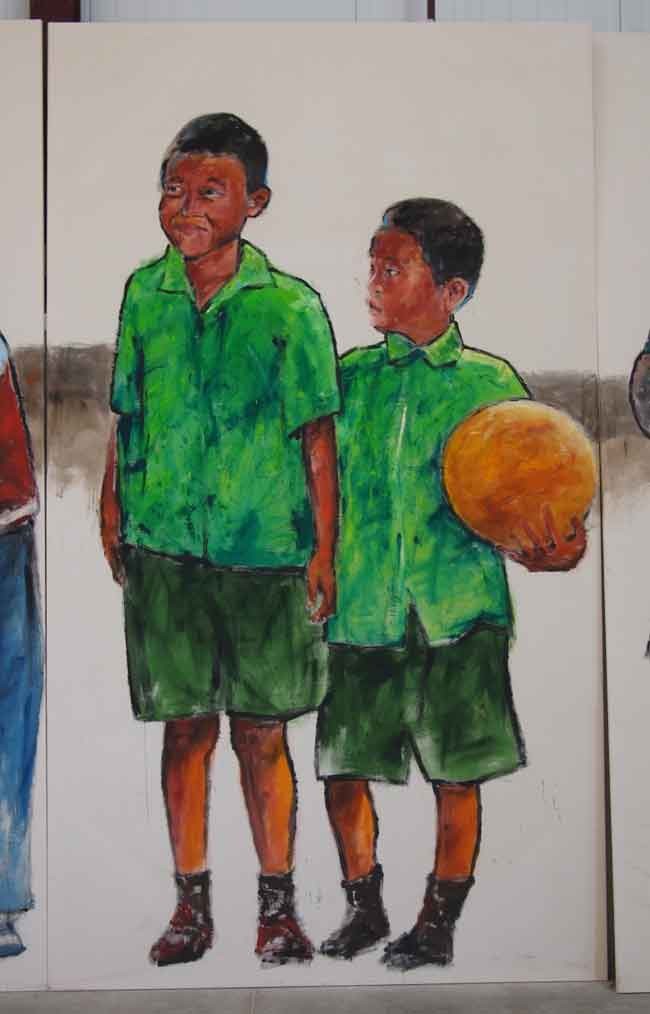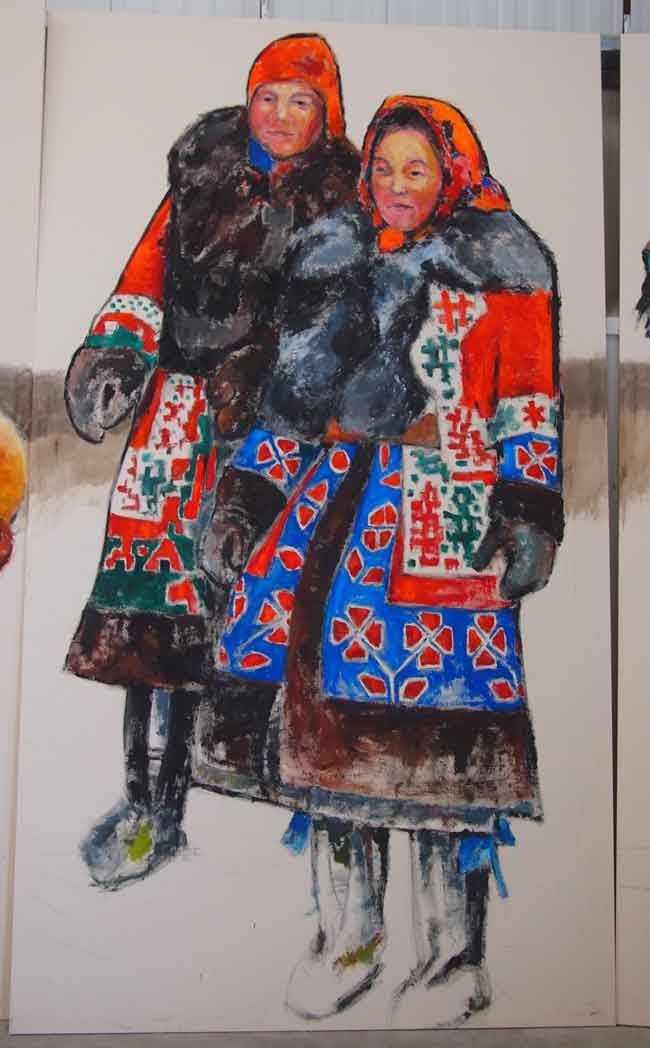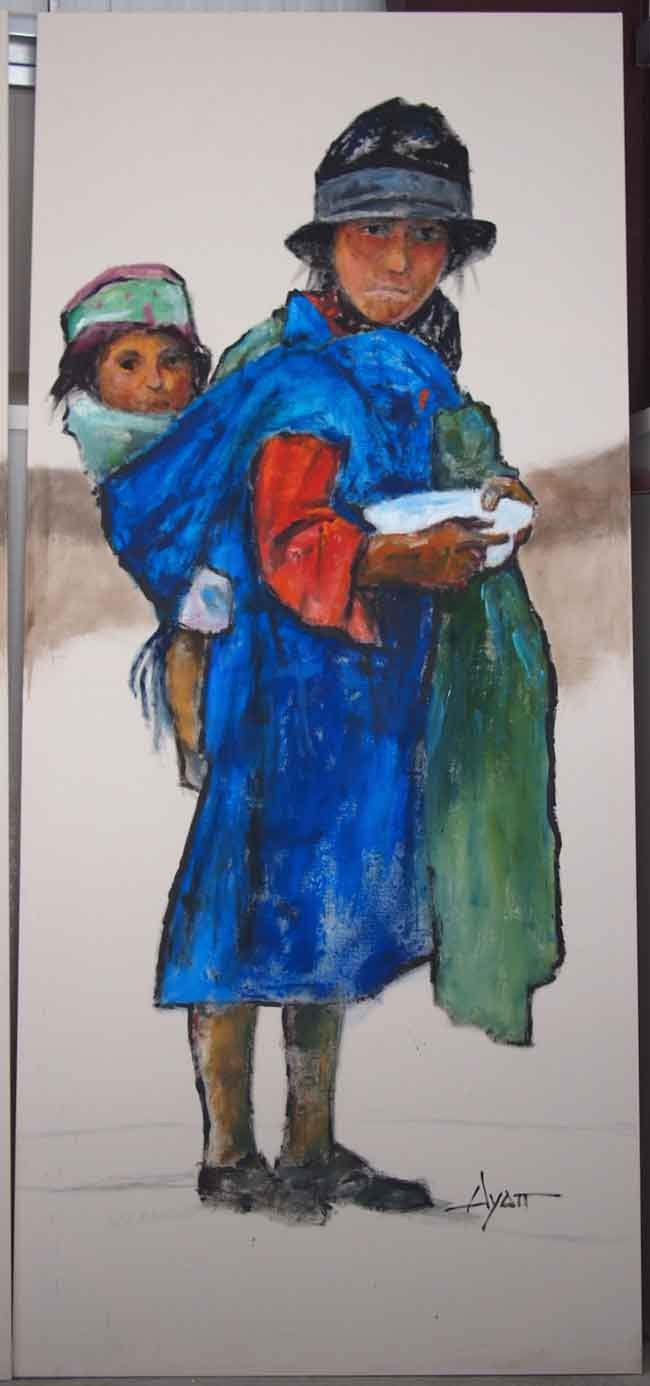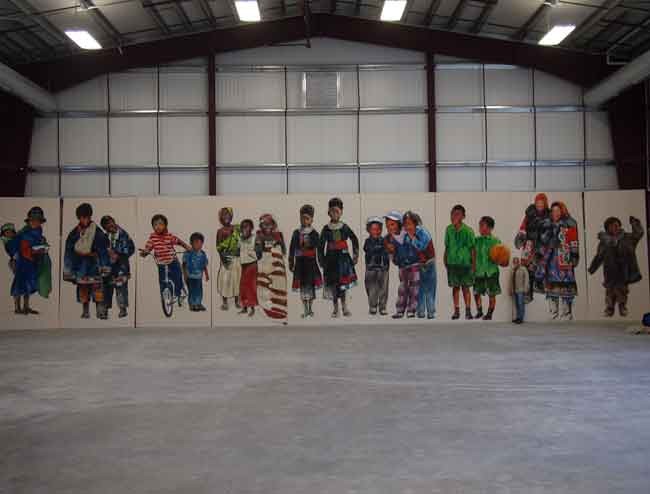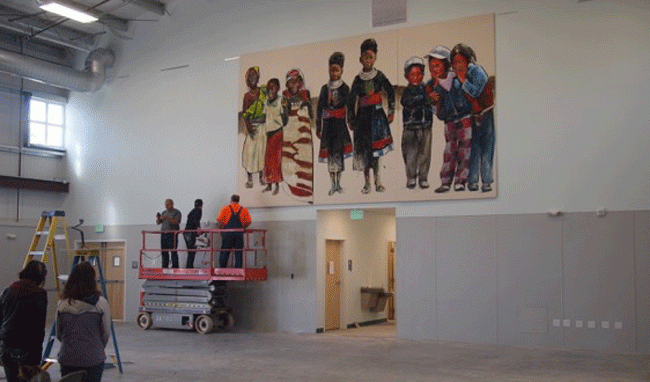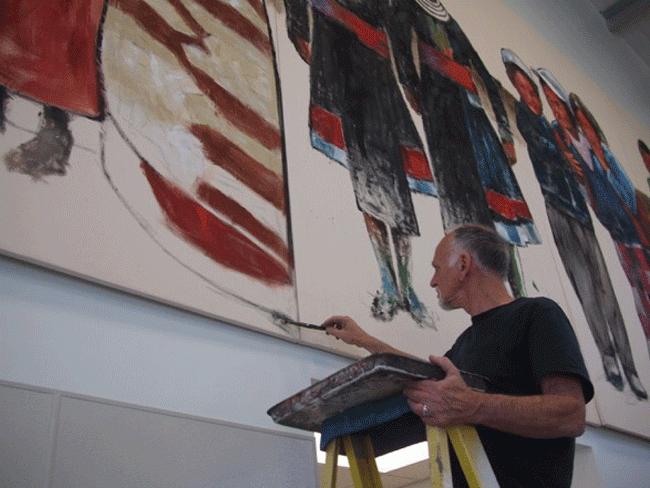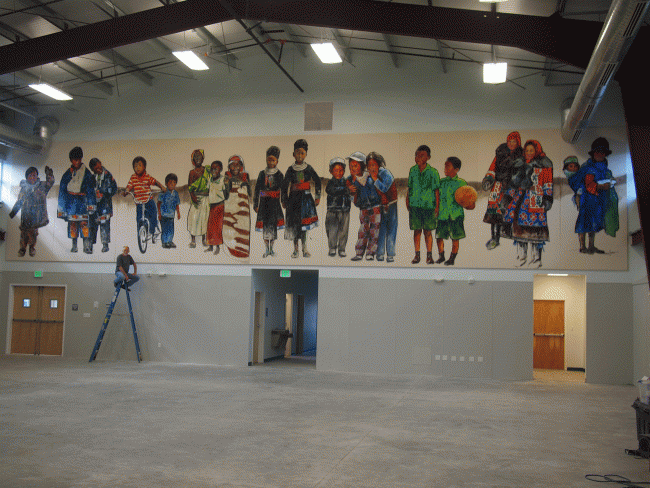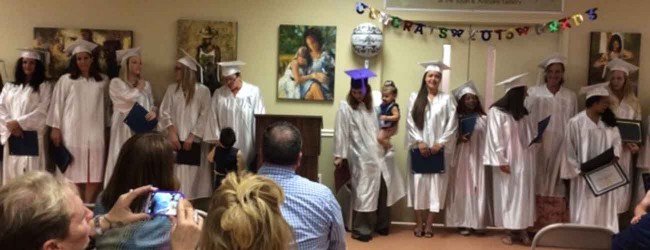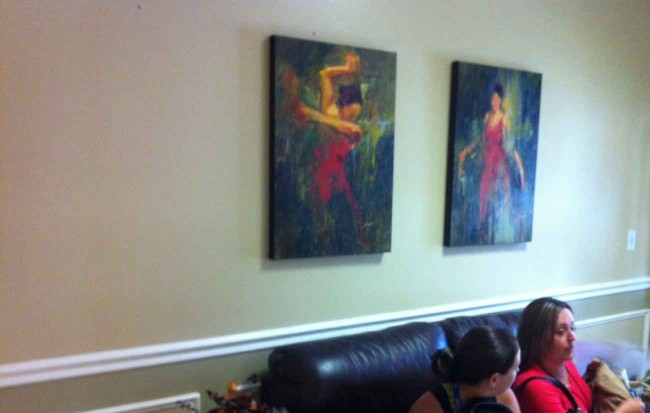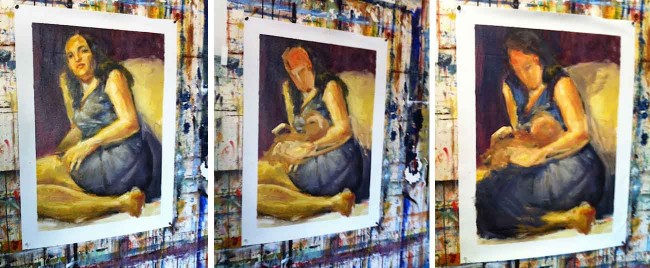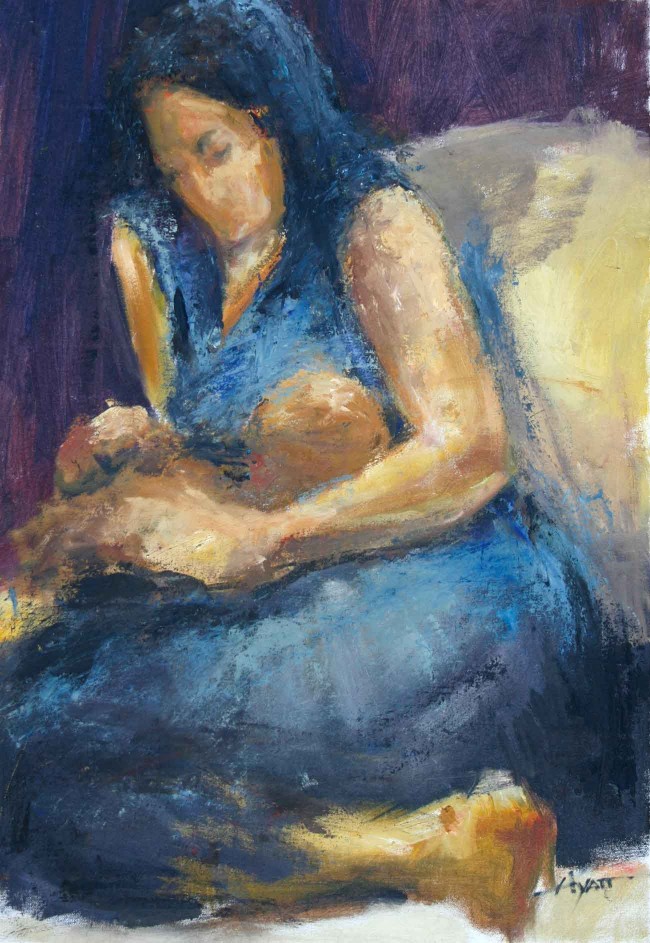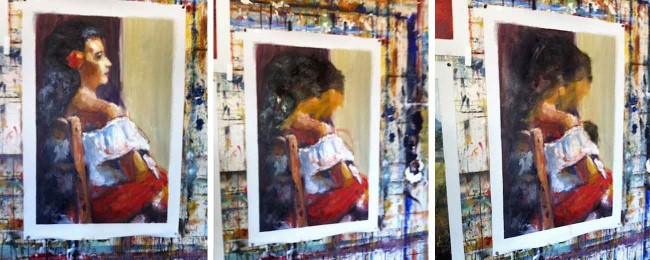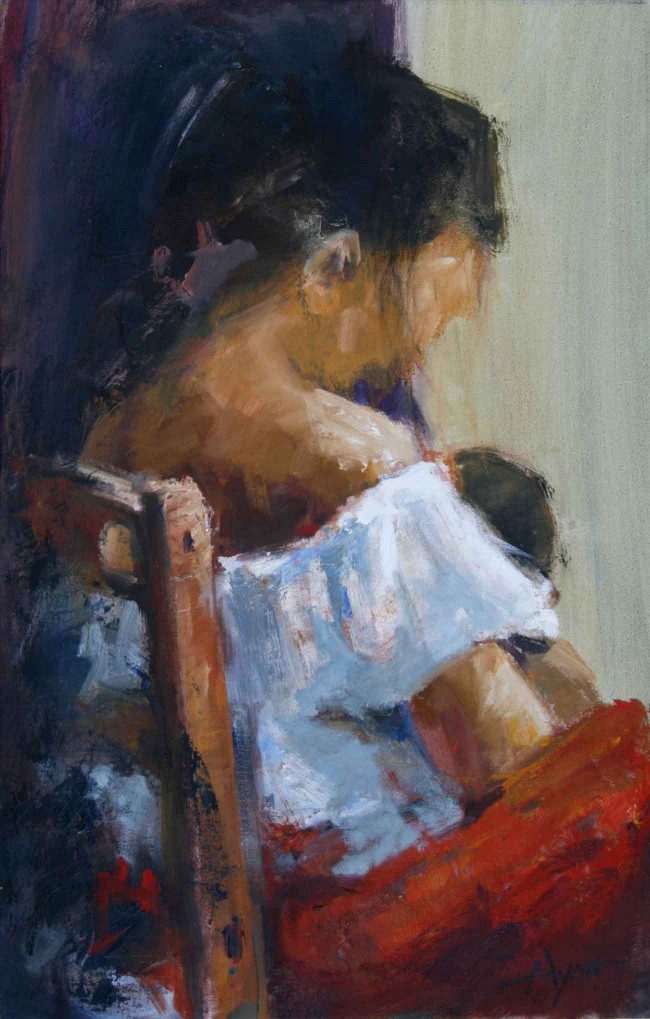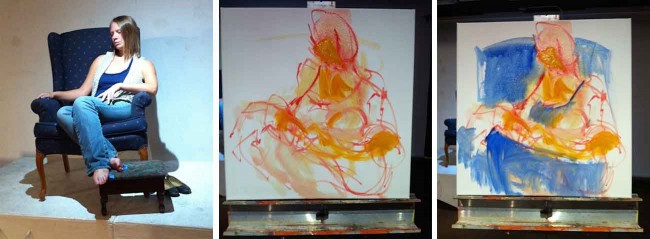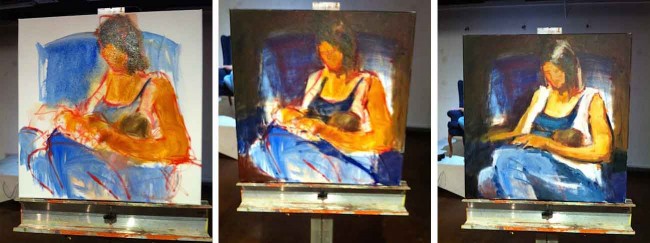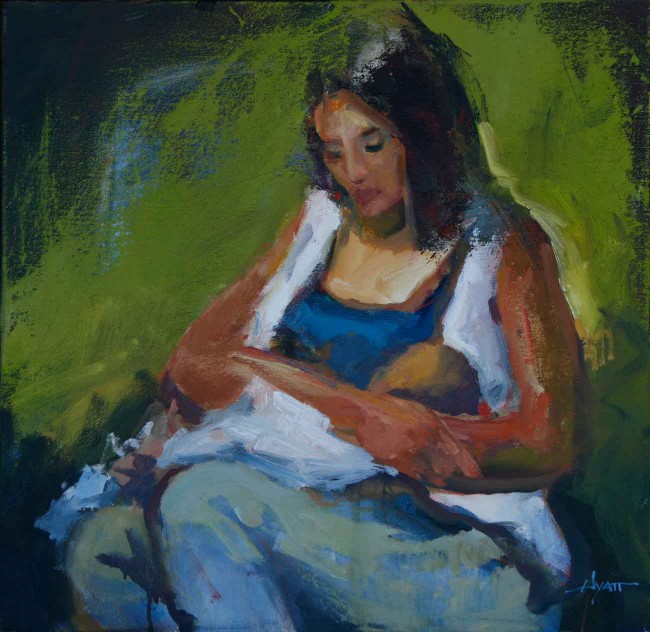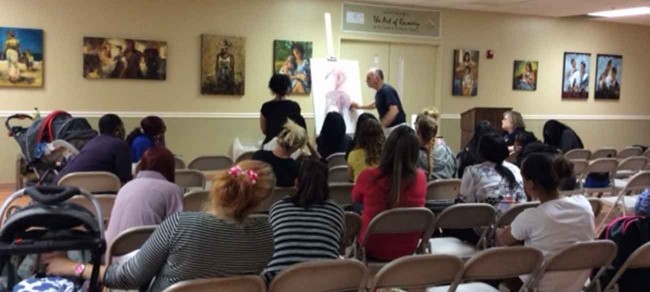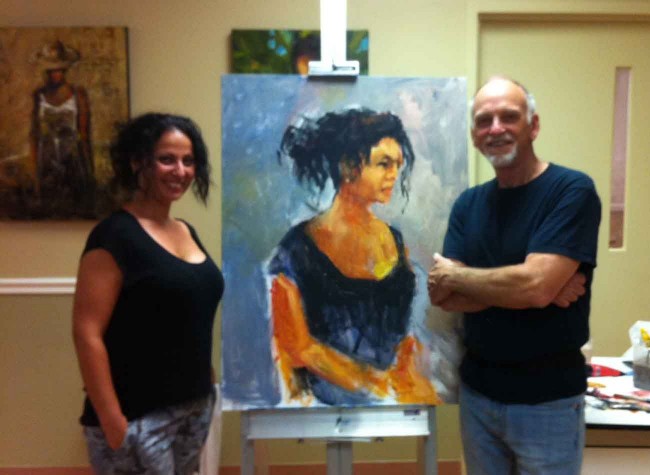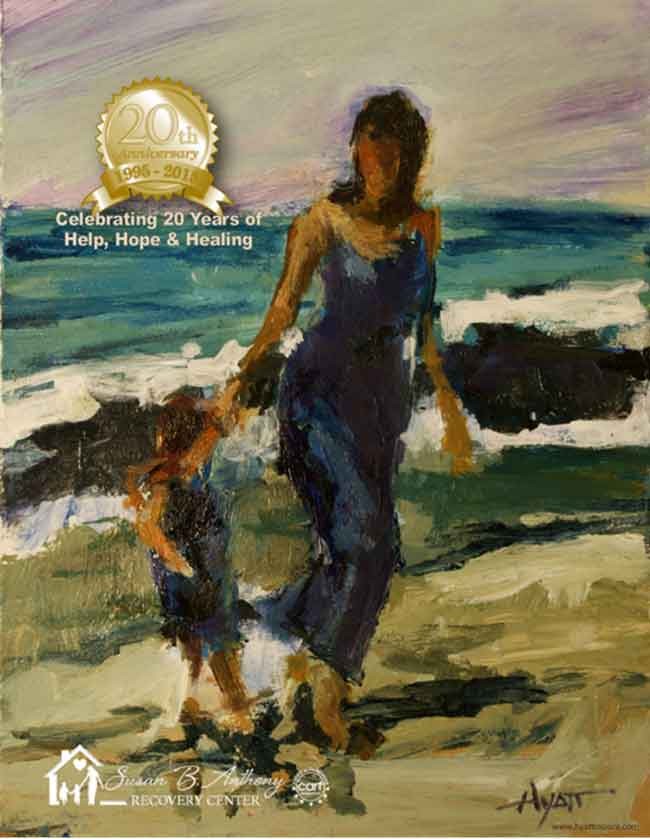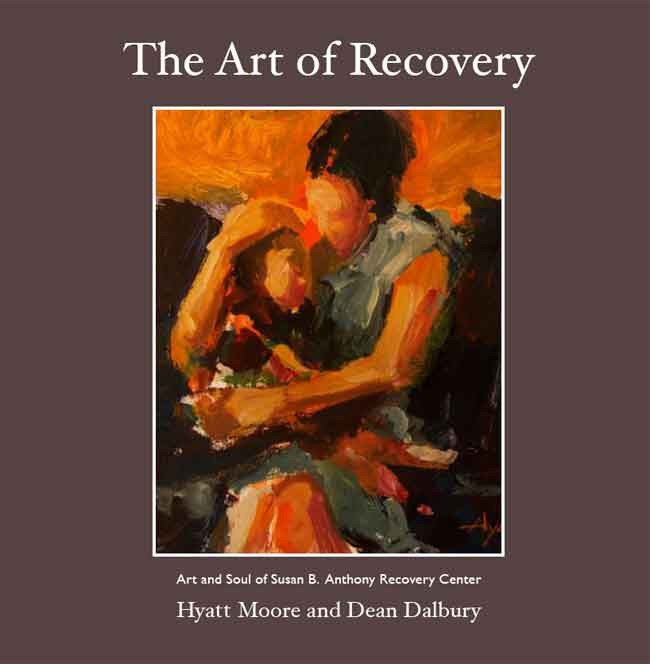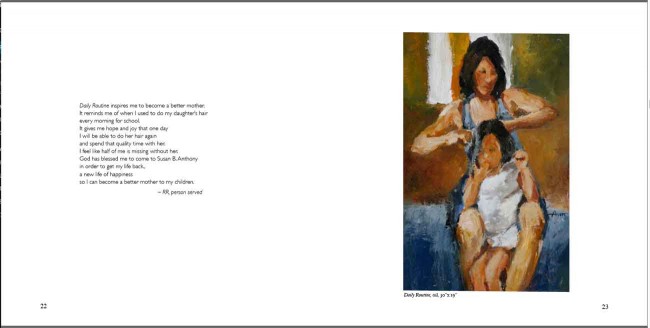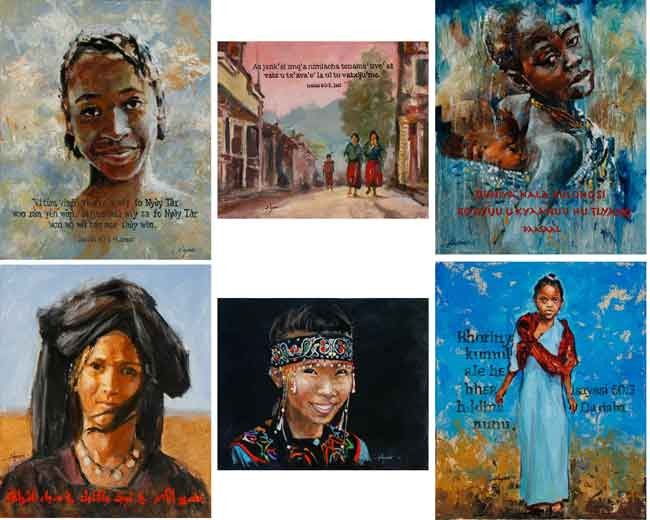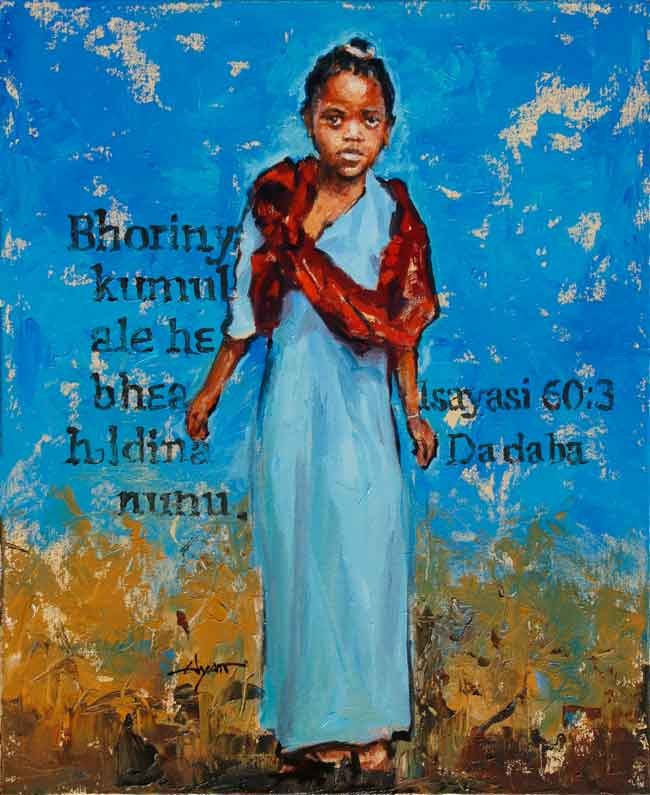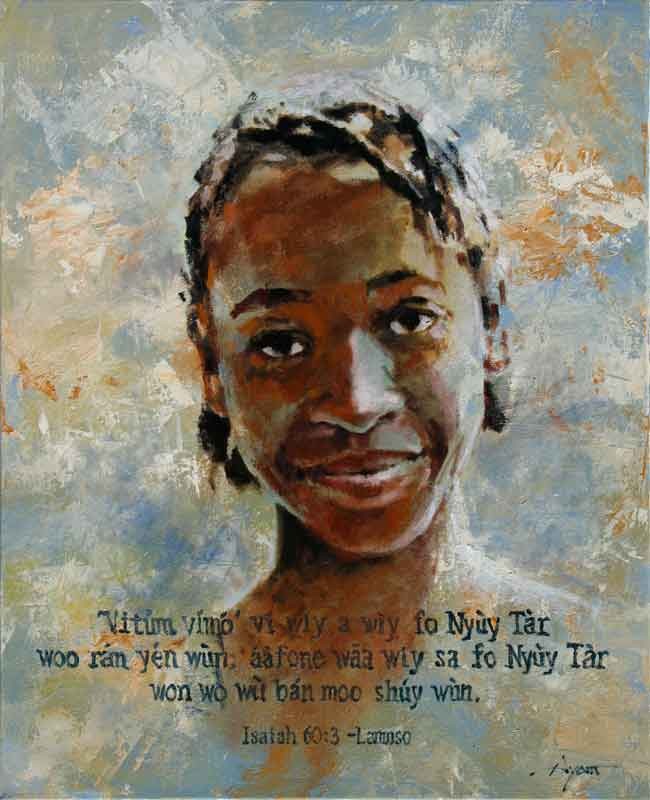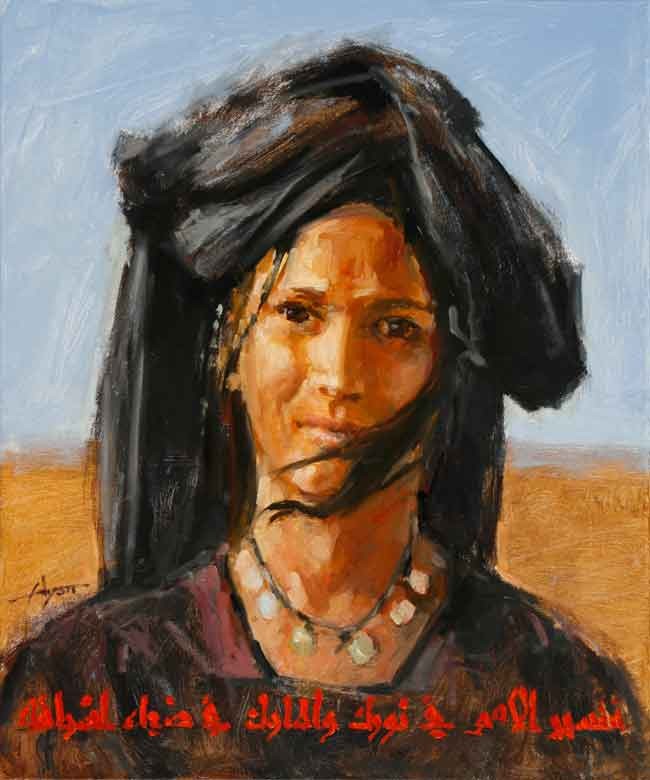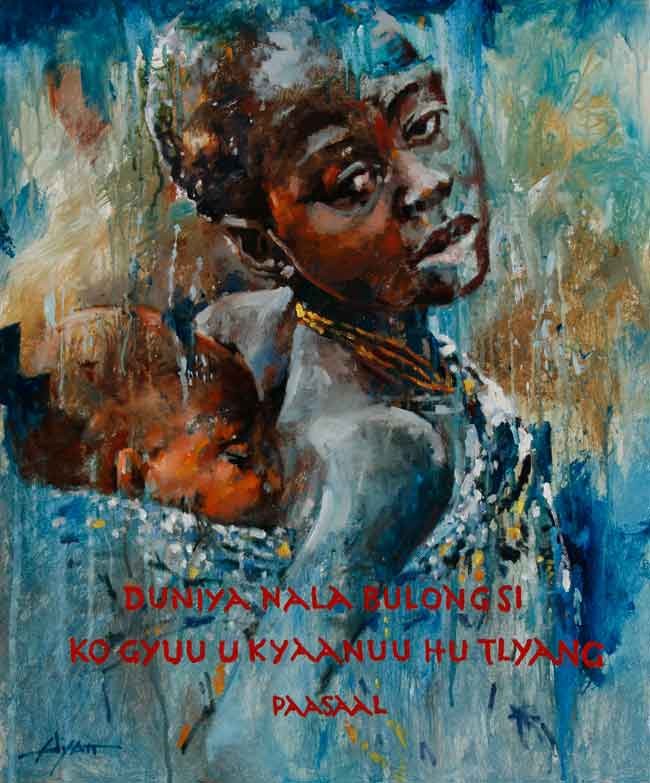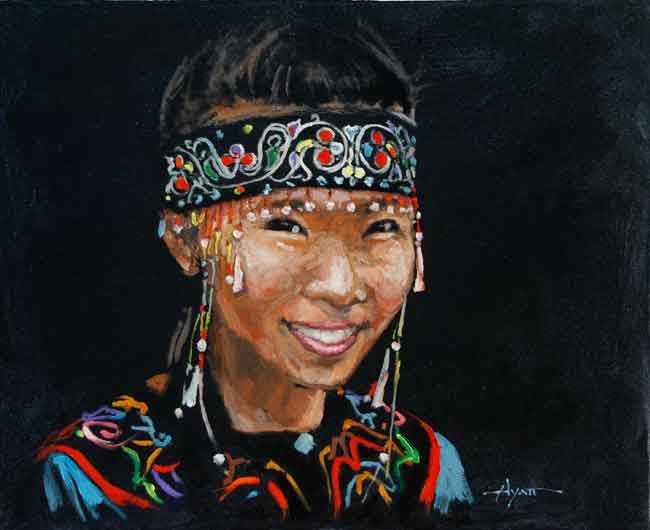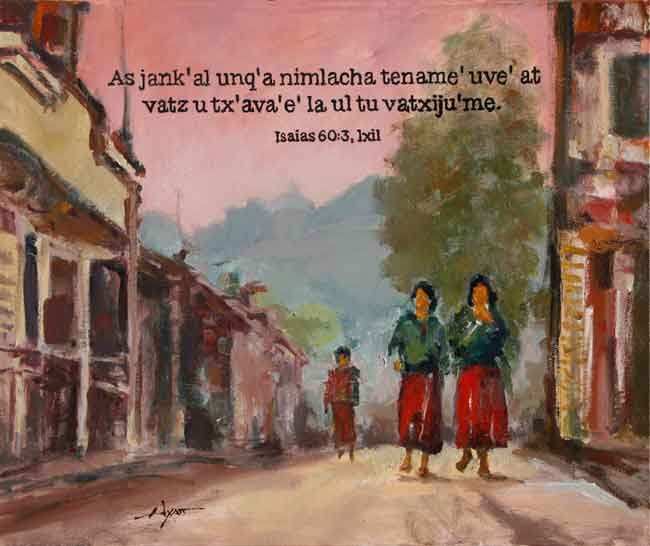Two weeks ago I was doing another one of those paintings long in planning and short on execution. This was for The Seed Company, an organization that sponsors Bible translation in minority languages by supporting native speakers to work in partnership. Here are some photos of the progress.
For this and all, click on the photo to view larger.
Here I am posing for a camera on Day 3. For part of the time I used a hotel dinner plate for my palette. But I’m getting ahead.
The Seed Company had retained the second floor of the 14-floor Sheraton in Arlington, Texas. There they held their week-long meetings for national and international staff. I arrived a day early to stretch canvas and get set up.
Here I am looking pretty formal before applying my first stroke of paint. I’d done the charcoal drawing ahead of time, working from a photoshopped layout that I’d also constructed. I chose to put it on three canvases for the sake of transport when it was finished. We bolted the pieces together on the back.
I used the business end of a short push-broom to get the background going. The charcoal drawing was sprayed with a fixative to keep it from disappearing as I applied the water-based acrylic paint.
Early on a young boy appeared, full of energy and really intrigued with what I was doing. So I gave him a brush and let him go at it. I figured I could always paint over it, and who knows, he might introduce something inspiring.
At first, it’s just a matter of getting paint on canvas . . . and just the beginning of over-use of that right arm. All day, every day I worked it, often overhead; I wondered if it would last. When I’d think to switch arms, I found my left totally uncoordinated and useless. Funny how that is.
It’s just a lot of square footage to cover with paint. I’d use different approaches, like that big sponge on the table . . . good for introducing drips.
This is all still on the first day. At this point I’d put a background color in, a foreground (the bodies), and now was working on color for the heads. Note the roll of paper towels, often used as a brush or a wiper. Very handy.
Here I was using a wetted and paint-soaked paper towel to “flop” paint onto the canvas. It’s a way of introducing randomness that can add to the charm.
I tried to keep my colors organized rather than be always hunting. Note the distant “palette table,” borrowed from the hotel kitchen, very handy with wheels. That whole canvas was propped up on drop cloth-covered hotel chairs.
Every day I worked into the evening. Most of the time the 400 staff members were occupied in their meetings, but they’d often come by during breaks and observe the progress. Their presence, and the looming due date, kept me working far more hours per day than if I were just at home in the studio. Even with 12-hour days, I felt no lack of energy. Only my arm complained.
That’s my new computer . . . with not a lot of paint on it yet. It’s a great tool, allowing me to enlarge and move around the image I was working from.
The point was to not give too much facial detail, as those featured were to be more “representative” than actual. Still, as faces emerged, guests had great fun trying to guess who among their colleagues I was painting.
My thanks go to two photographer friends who supplied most of these pictures, John Walton and Gary Coos. The little boy’s turquoise strokes are still seen in some of the lower portions, as they were even in the finished product. (I should have had him co-sign the painting.)
In the end, all those who had served as photographic models came by for a picture. Two extras are the painter (center) and Lisa Dammon (to my right) whose idea the whole thing was. The name of the painting: “It Takes Us All.” It’s of staff members interspersed with internationals, as it’s for them the organization exists. (Again, click for larger view.)
Here’s the finished product hanging in its permanent home, the new headquarters for The Seed Company in Arlington, Texas.
